Workshop on Protecting and Promoting Non-Motorised Transport in the Emerging City of Terai, Birgunj
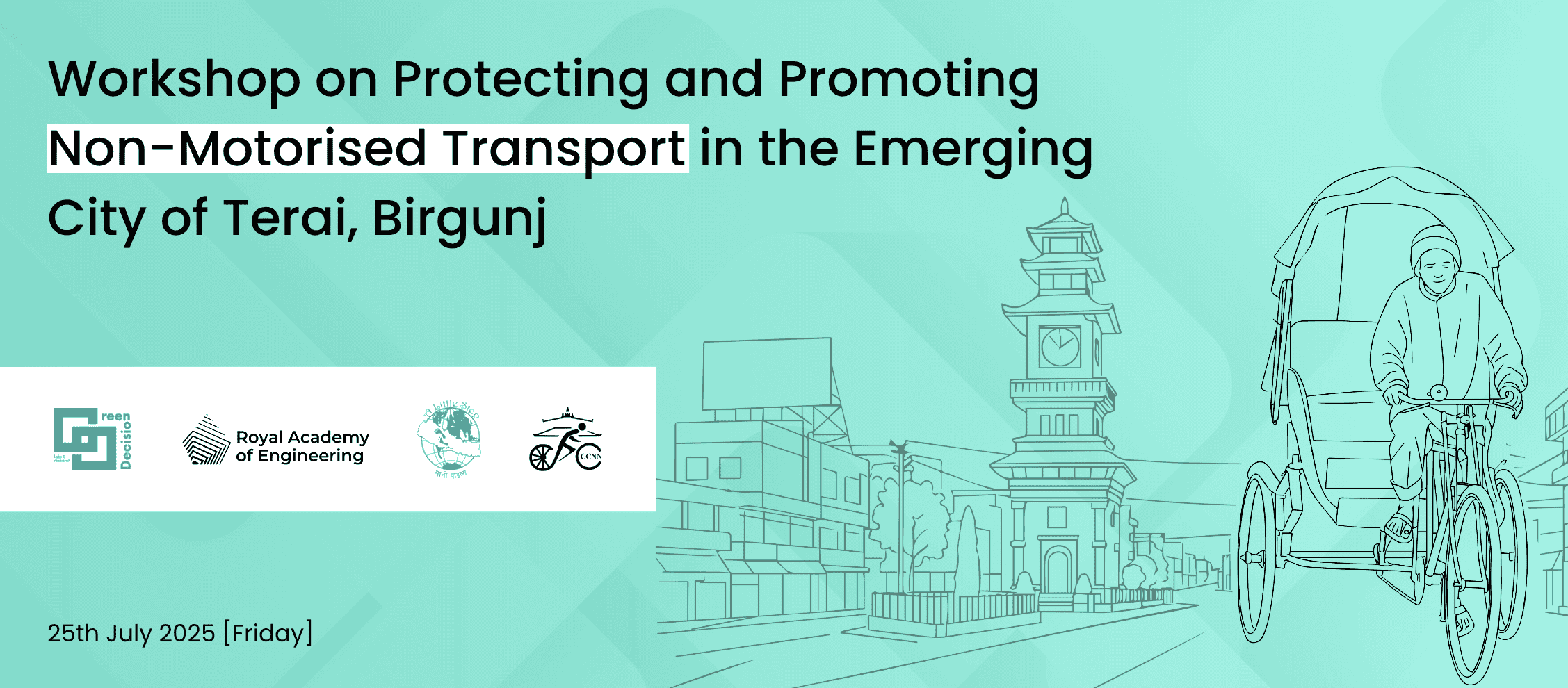
Birgunj, the bustling trade hub of southern Nepal, is growing fast — but so are its traffic woes, road safety issues, and social inequities in transport access. While cars and bikes crowd the main roads, it’s the cyclists, rickshaw pullers, handcart operators, and pedestrians who keep the city running. These non-motorised transport (NMT) users often go unheard in city plans — yet they form the backbone of sustainable, inclusive mobility.
To shift this narrative, a community-driven workshop was held in Birgunj on 25 July 2025 which brought together diverse stakeholders to explore actionable pathways toward safer and more inclusive non-motorised mobility in Birgunj.
Organised by Green Decision Labs & Research in collaboration with Sano Paila and Cycle City Network Nepal (CCNN), the workshop aimed to reimagine urban mobility through a people-first lens — one that champions equity, climate resilience, and lived experience. Together, participants mapped the threats and opportunities facing NMT users in Birgunj, co-creating pathways toward safer, more inclusive, and sustainable transport systems.
Workshop Objectives
The objectives of the workshop were to:
Document Lived Experiences: Capture the challenges faced by non-motorised transport users in Birgunj, including issues related to road safety, infrastructure deficits, and social exclusion.
Identify Barriers and Opportunities: Understand the factors that hinder or could support the growth and sustainability of non-motorised transport in the city.
Foster Stakeholder Collaboration: Facilitate dialogue and cooperation among community members, local government officials, urban planners, and civil society organisations.
Co-Create Practical Solutions: Develop people-centred strategies aimed at making Birgunj’s urban mobility safer, more inclusive, and environmentally sustainable.
Who Participated?
The workshop brought together a diverse set of participants representing both grassroots and institutional perspectives. These included:
- Urban Planners and Municipal Officials
- Traffic Police and Local Government Representatives
- Cyclists, Rickshaw Pullers, Handcart Operators
- Community-Based Organisations, Women’s and Youth Groups
- Environmental Researchers and Transport Advocates
- Journalists, Academics, and Local Leaders
This diversity ensured a holistic understanding of urban mobility challenges and facilitated equitable dialogue.
Key Activities of the Workshop
The workshop was structured to encourage active participation and meaningful dialogue through a blend of presentations and interactive group work.
- Presentation by CCNN:
Mr. Chakshu Bikram Malla, President of Cycle City Network Nepal (CCNN), delivered a compelling presentation on the benefits of cycling for individual health, urban well-being, and climate action. He shared successful examples of cycling-centric cities around the world and discussed how a city like Birgunj could better promote cycling by investing in infrastructure, building awareness, and institutionalising support mechanisms. - SWOT Analysis:
Participants engaged in a guided SWOT (Strengths, Weaknesses, Opportunities, and Threats) analysis focused on NMT in Birgunj. To facilitate focused discussion, participants were provided with guiding questions addressing critical issues such as infrastructure adequacy, policy support, social acceptance, safety concerns, and climate impacts. This structured approach enabled participants to systematically identify internal strengths and weaknesses, as well as external opportunities and threats influencing the future of non-motorised transport in the city. - Group Presentations:
After completing the guided SWOT analysis, each group took turns presenting their findings to the entire workshop. These presentations highlighted diverse perspectives from across the stakeholder spectrum, including insights from NMT users, local officials, urban planners, and civil society members. The presentations sparked lively discussions among participants, enabling cross-pollination of ideas anda deeper understanding of shared challenges.
Few Glimpse from the Event Day
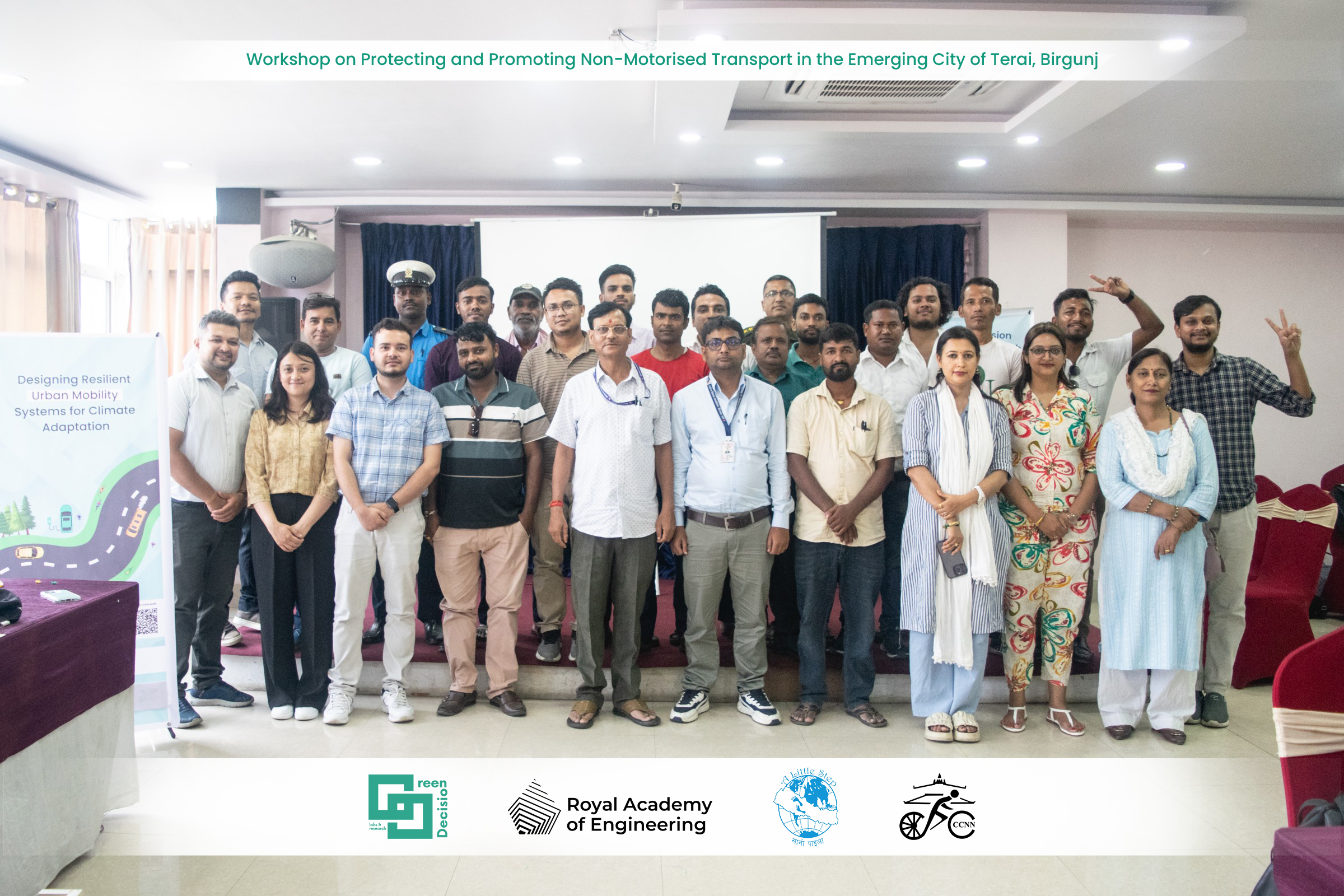

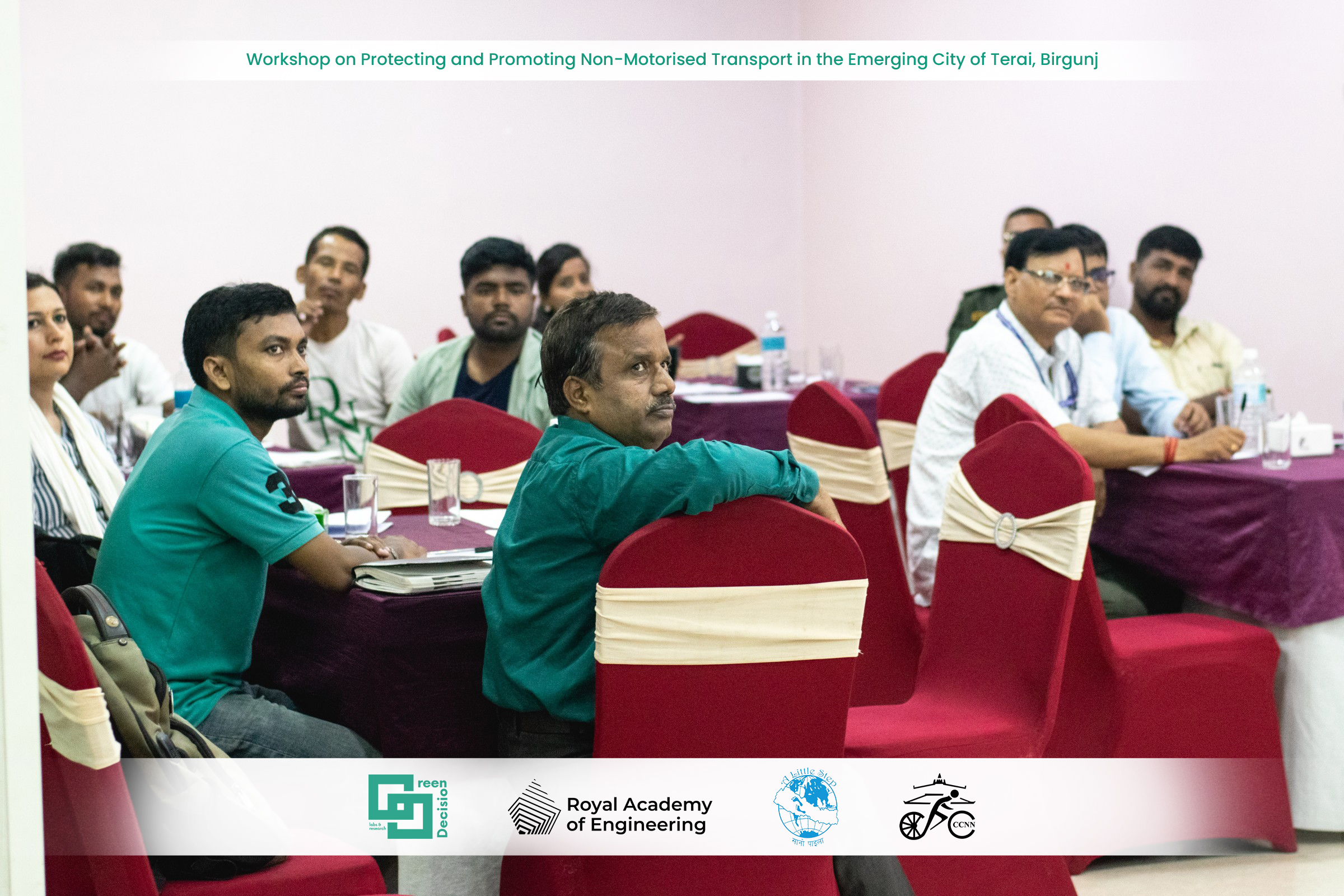
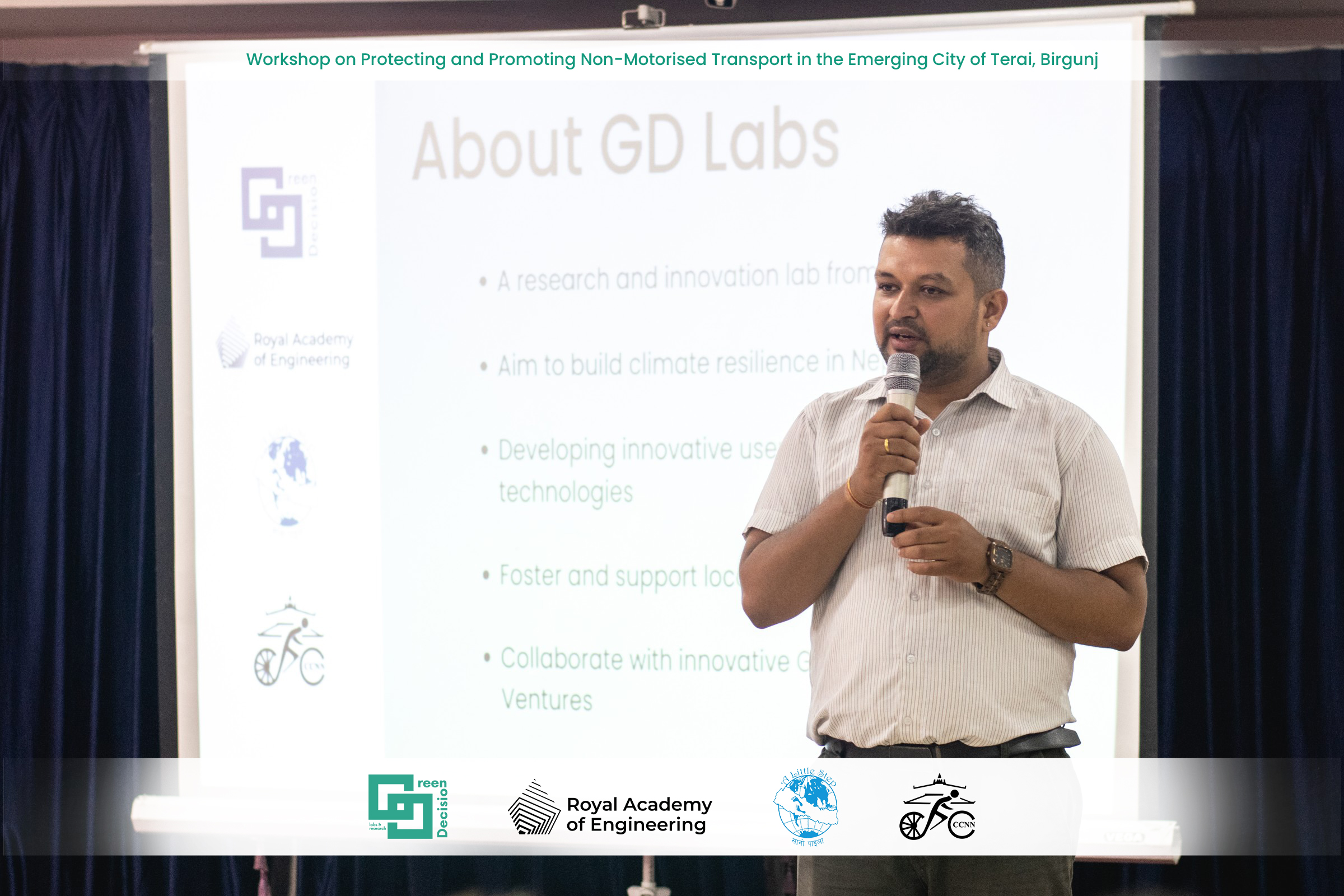
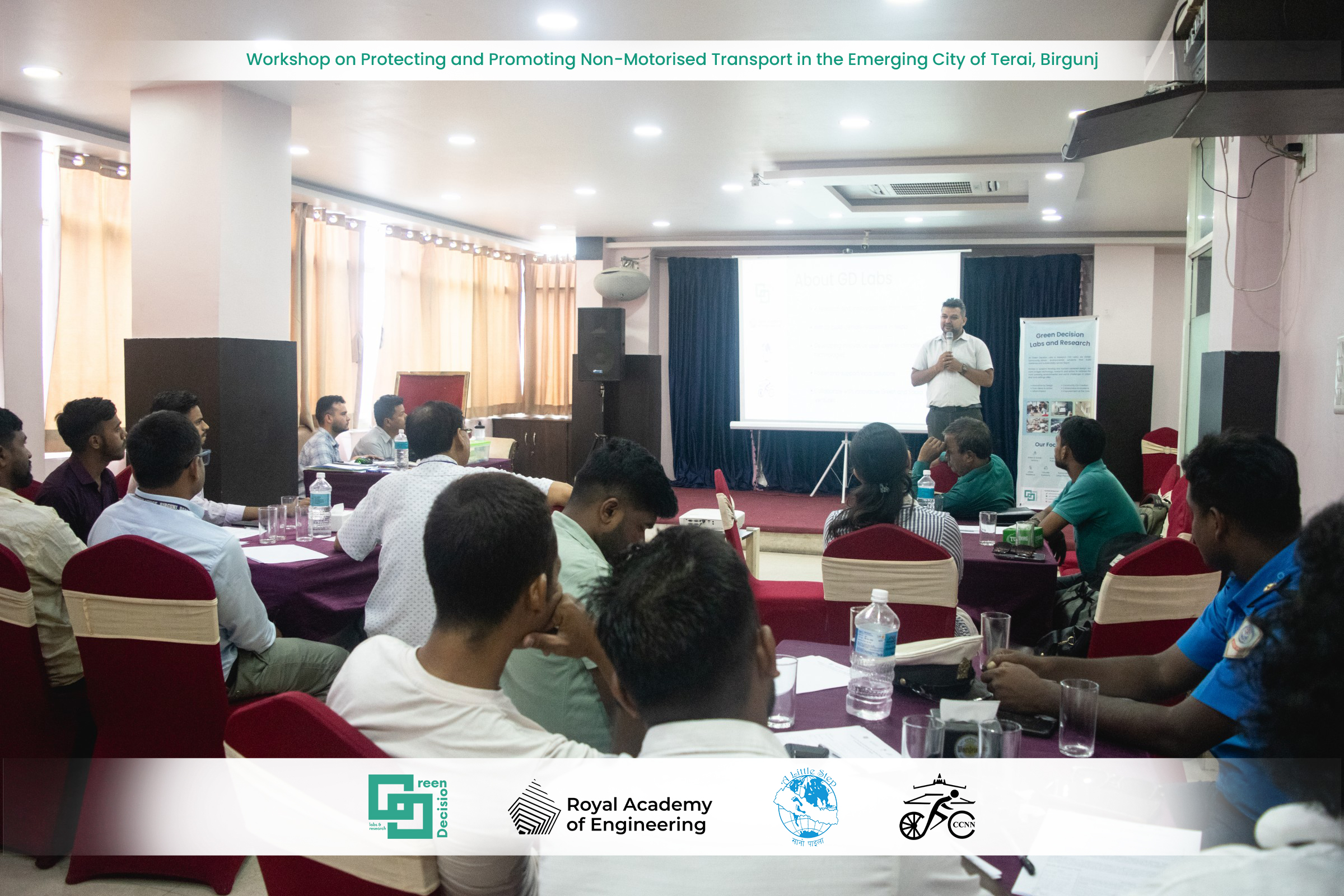
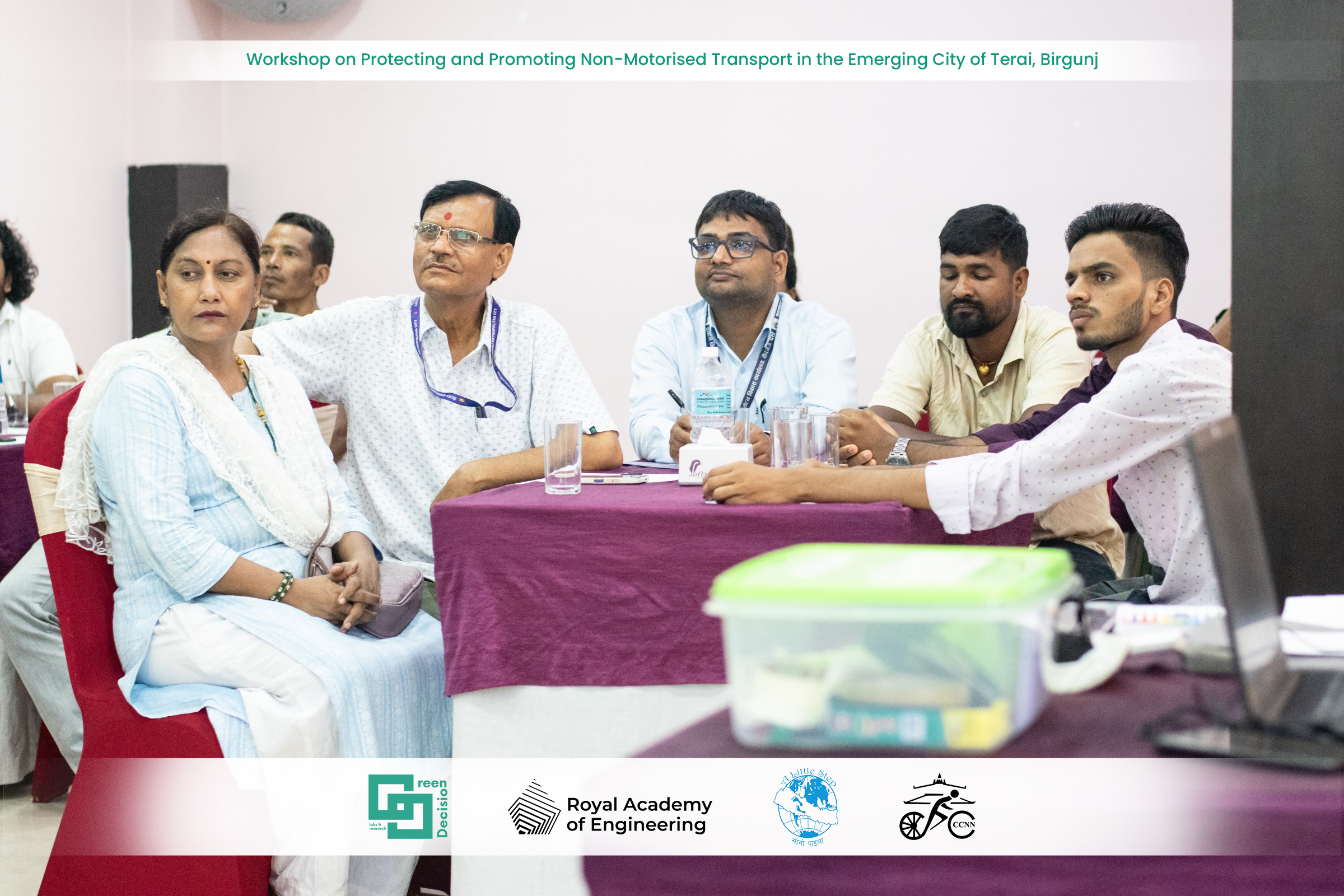
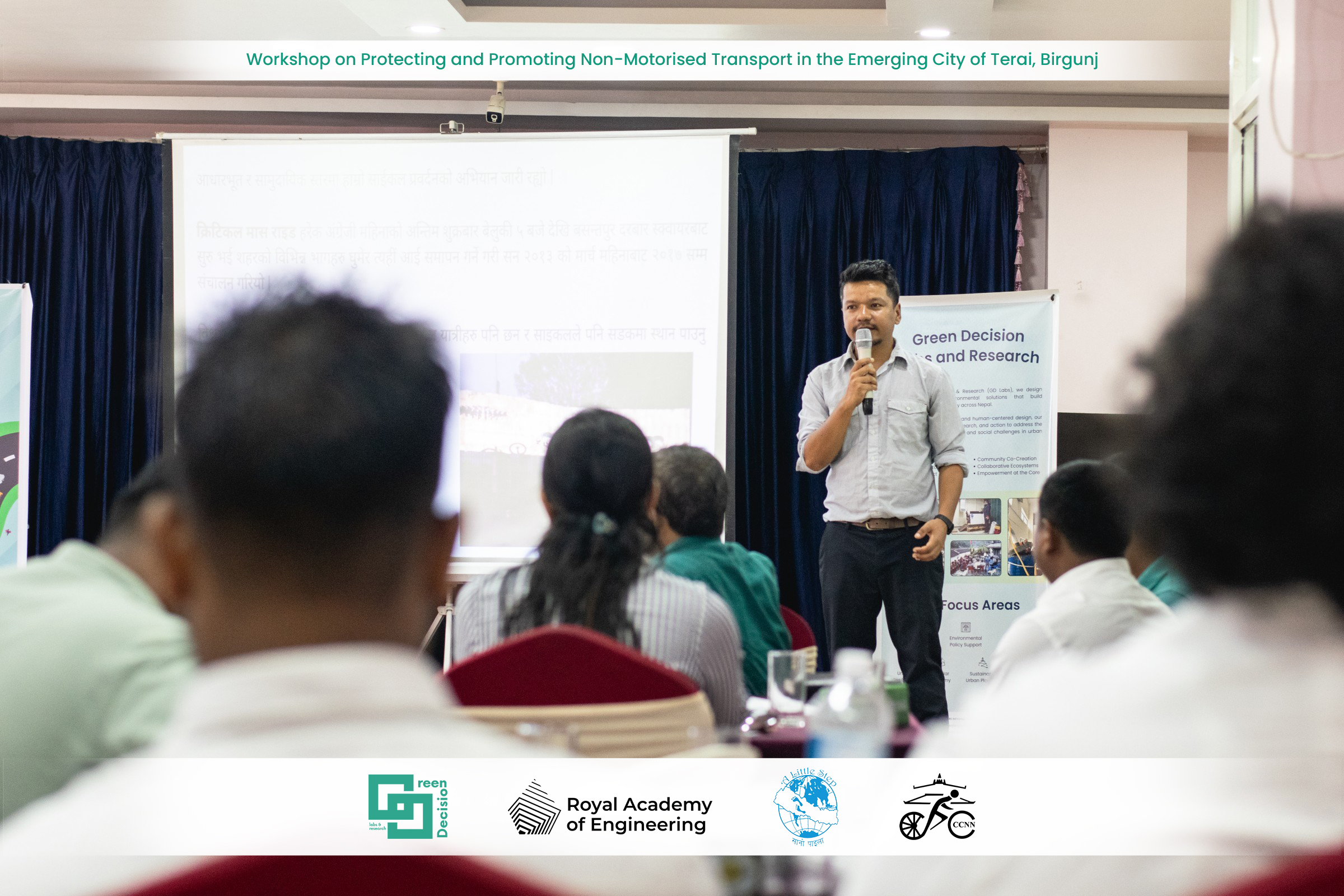
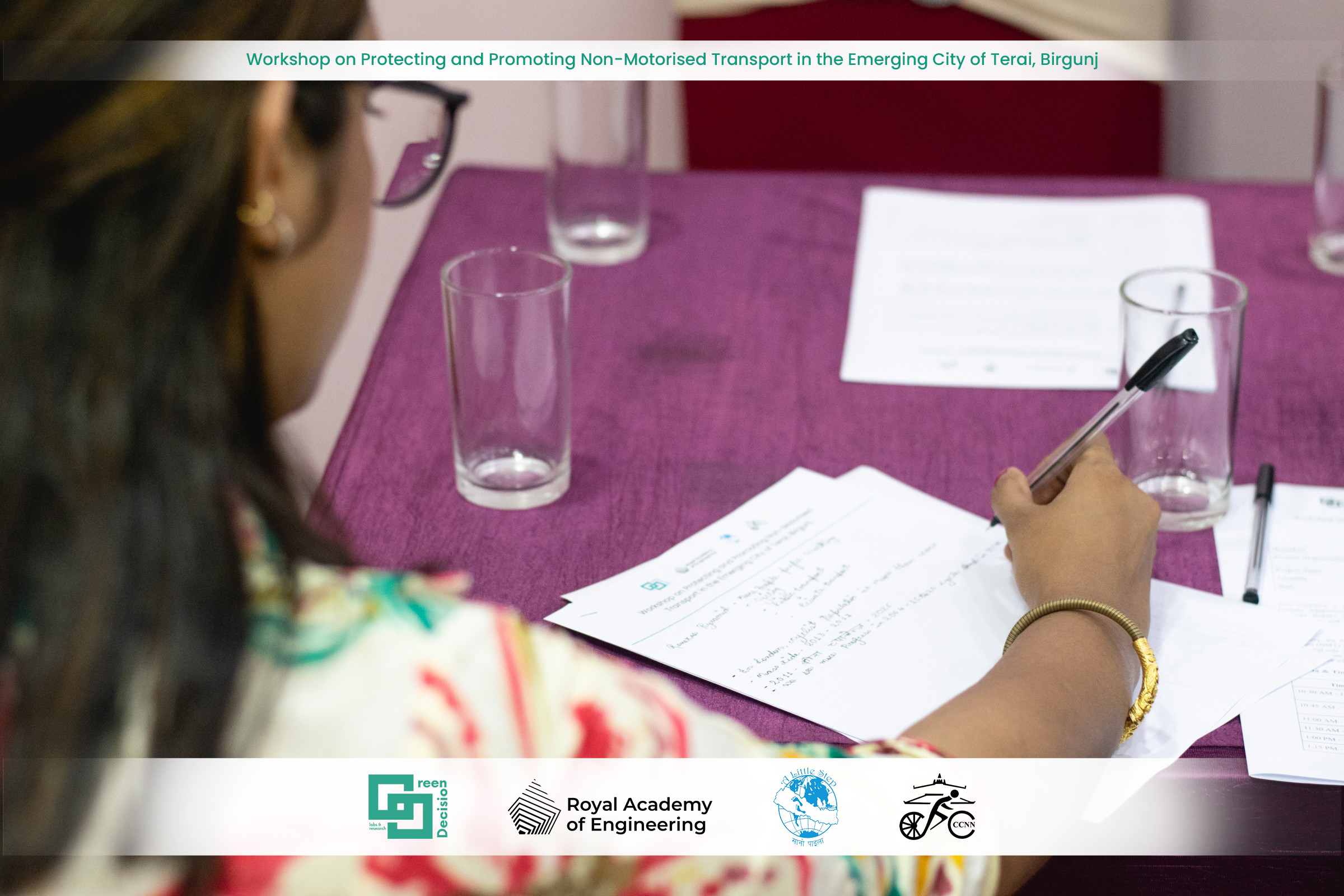
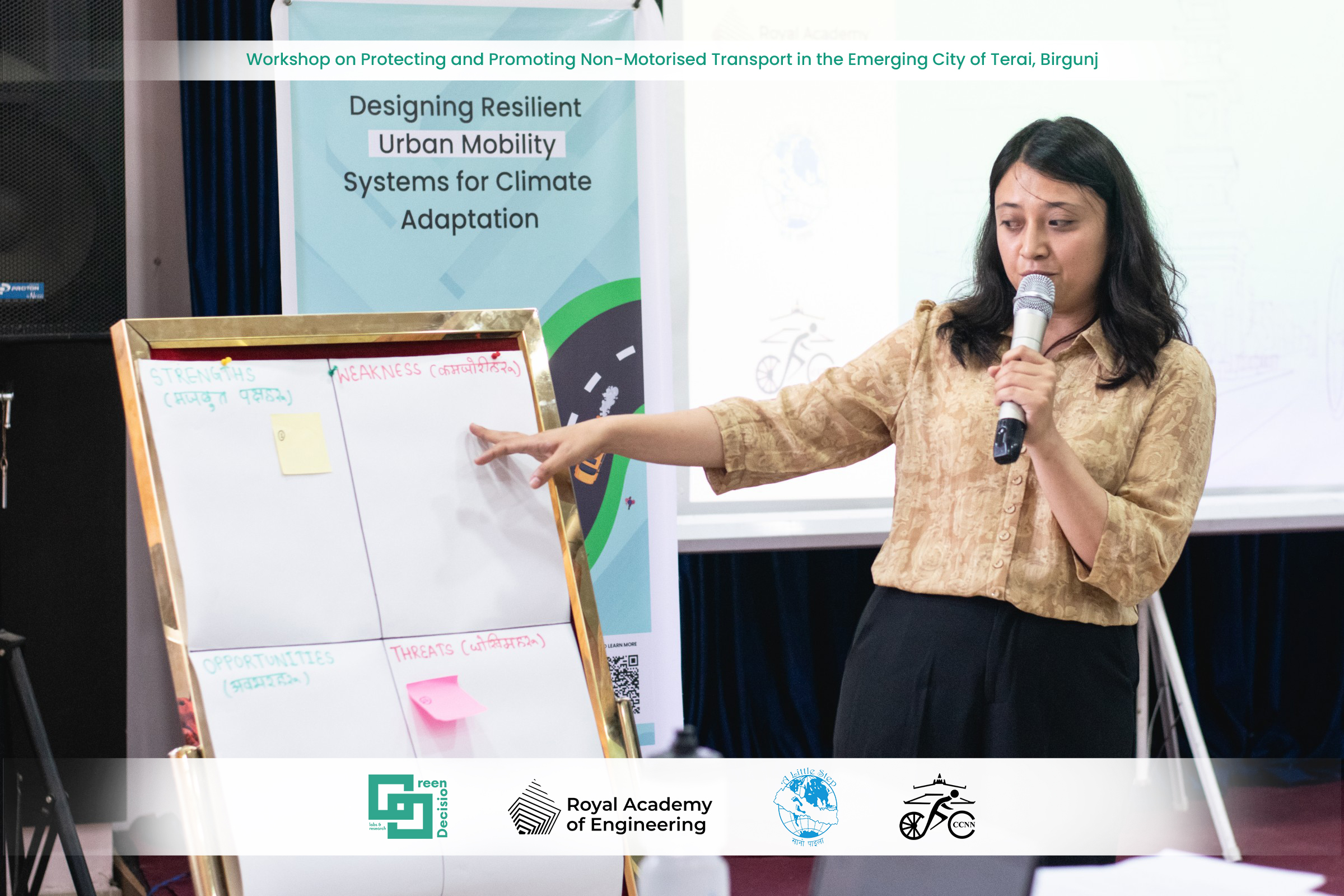
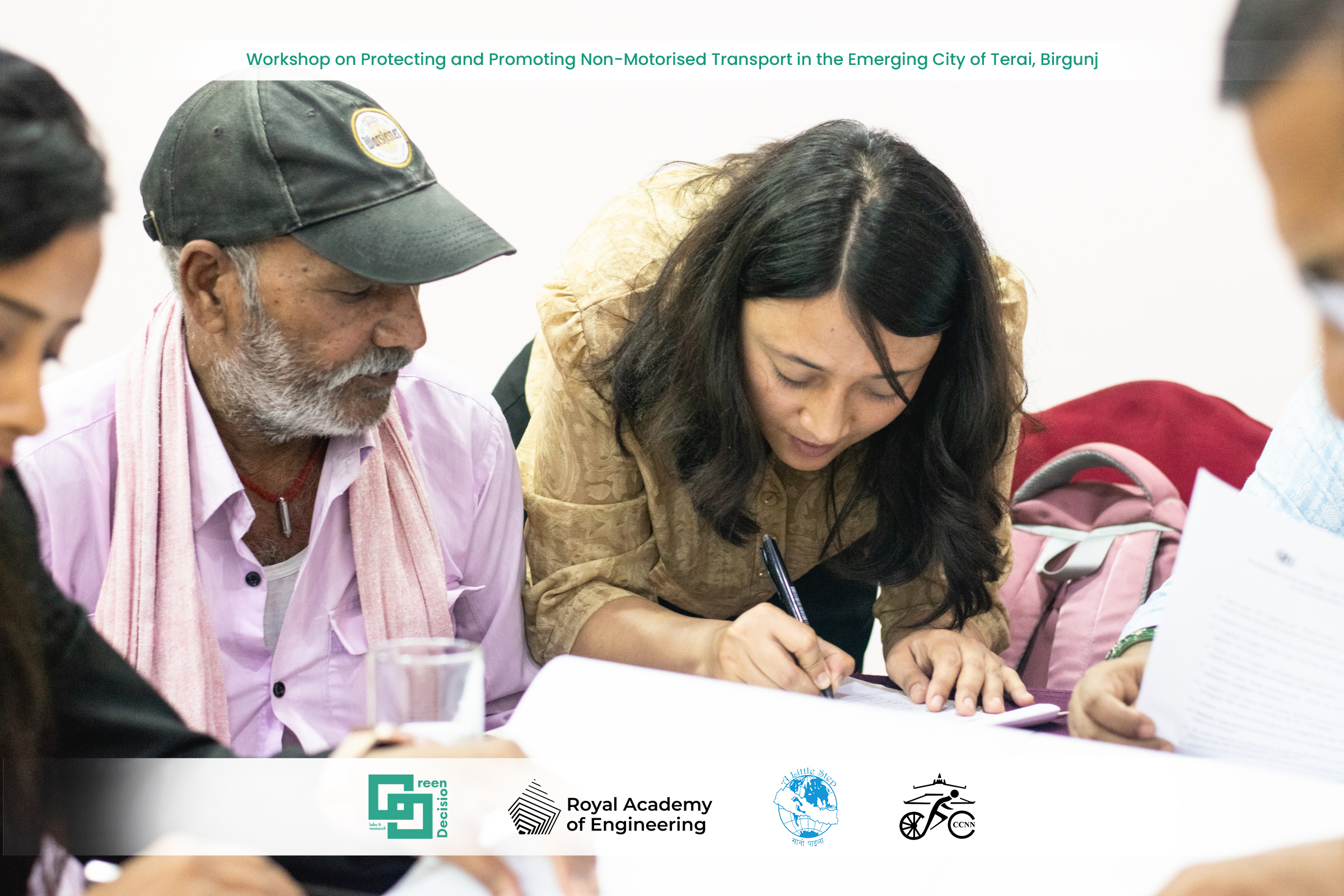
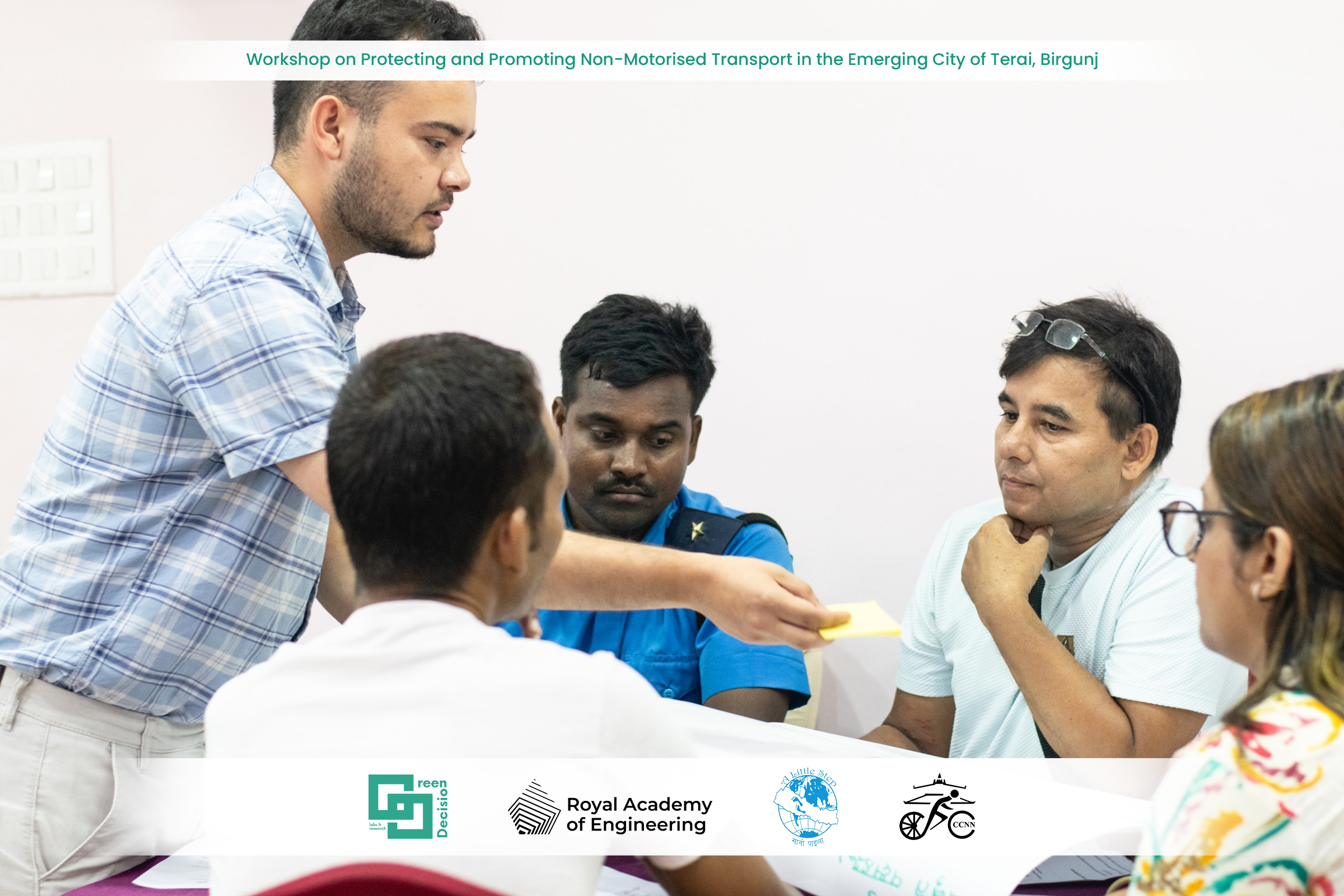
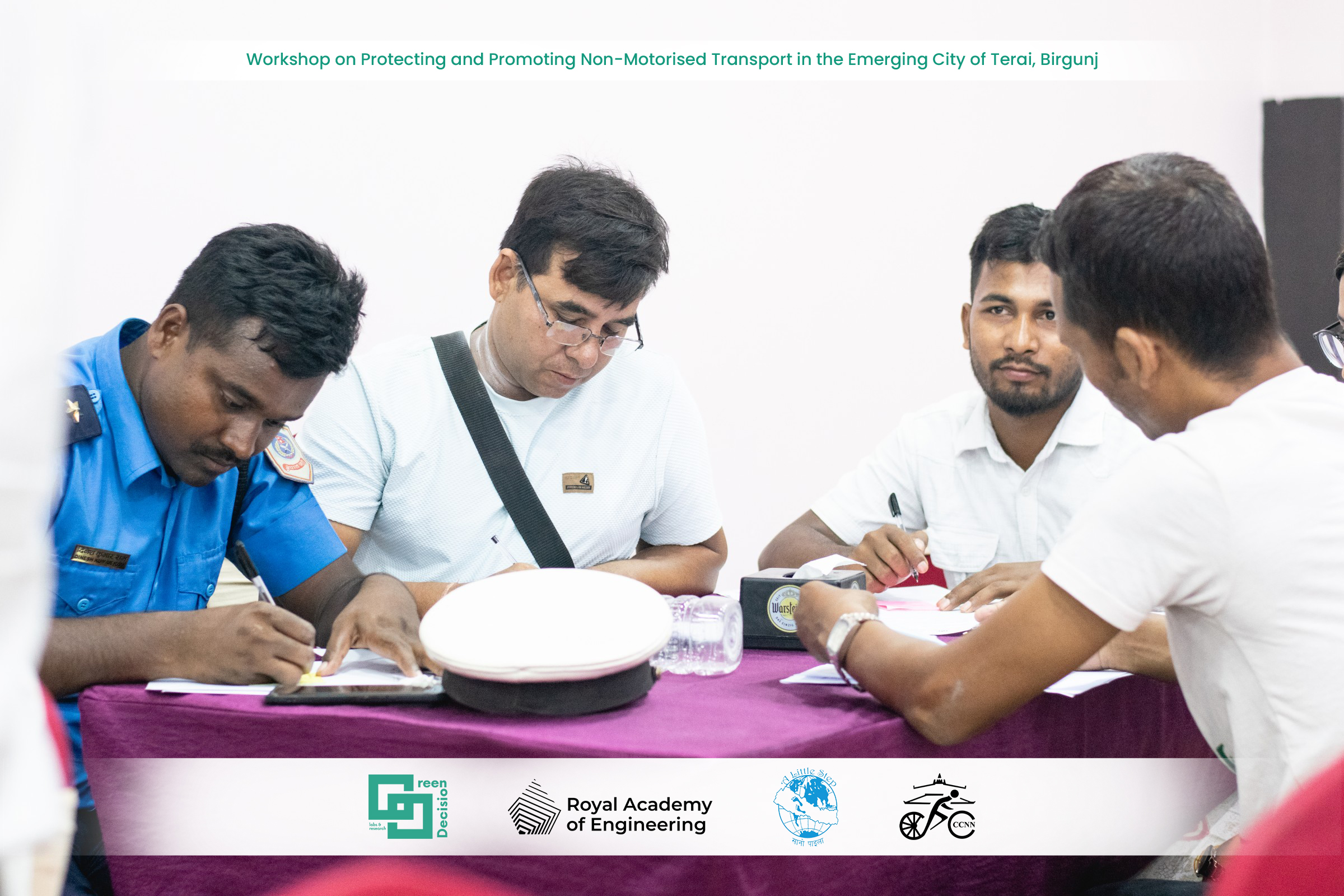
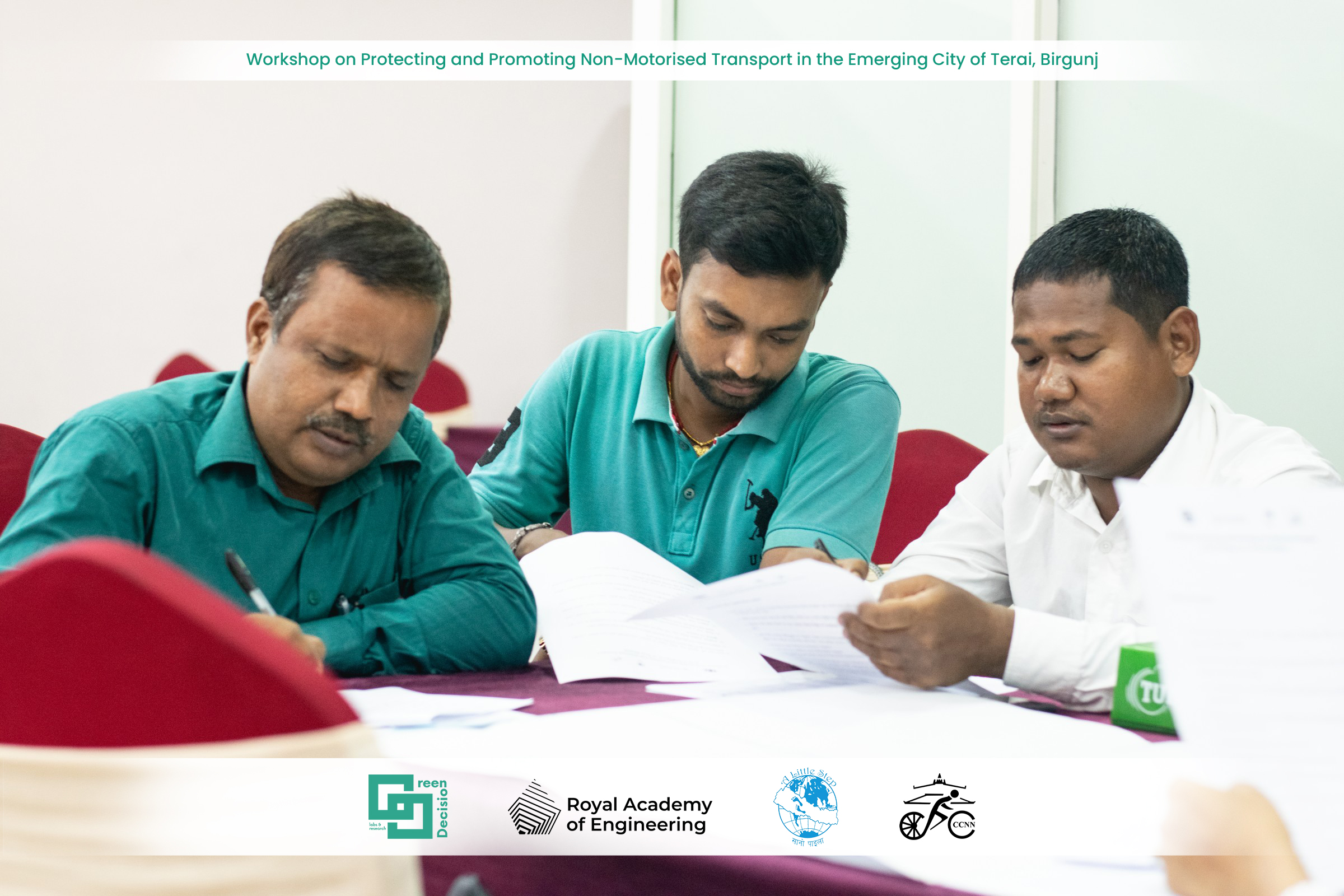
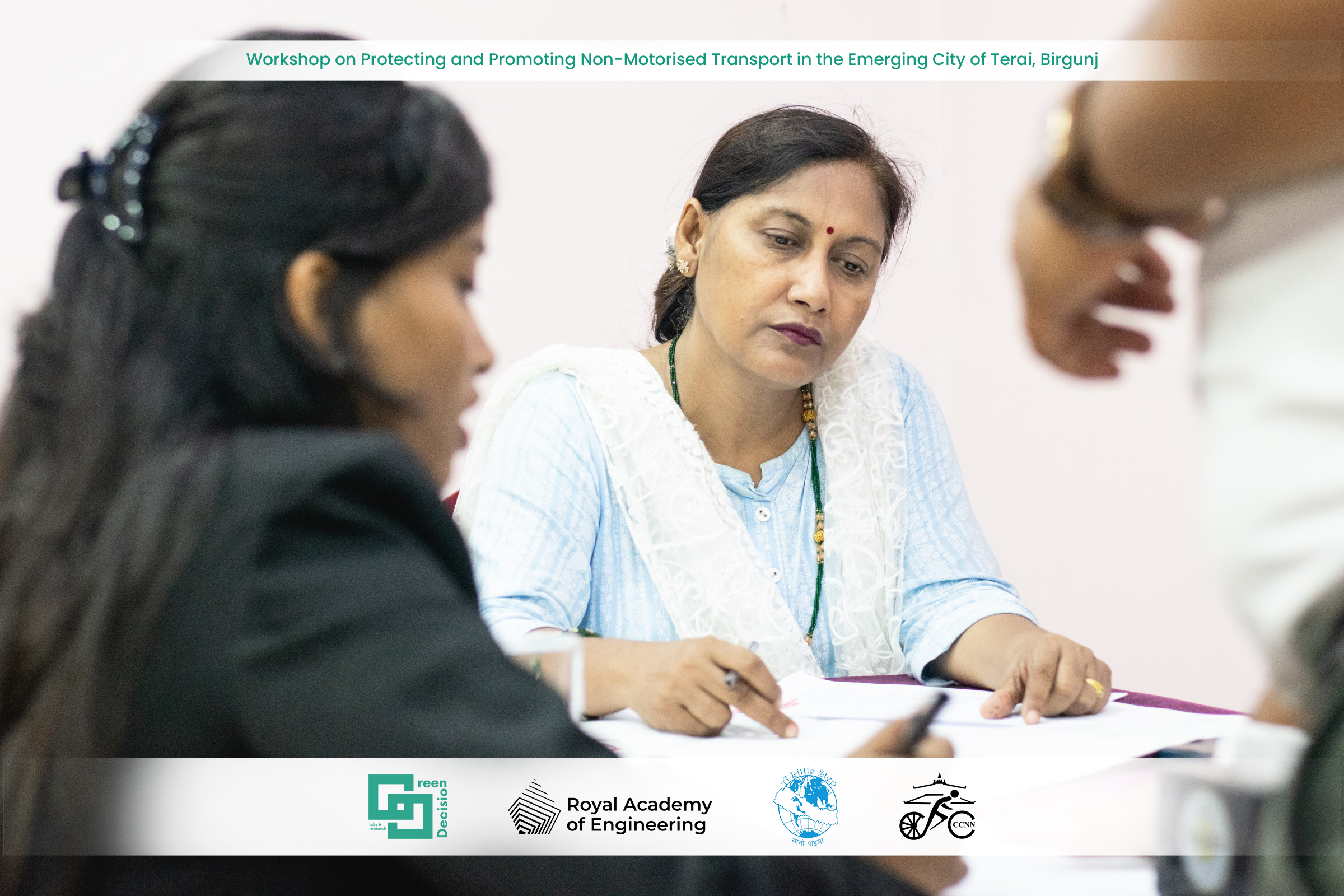

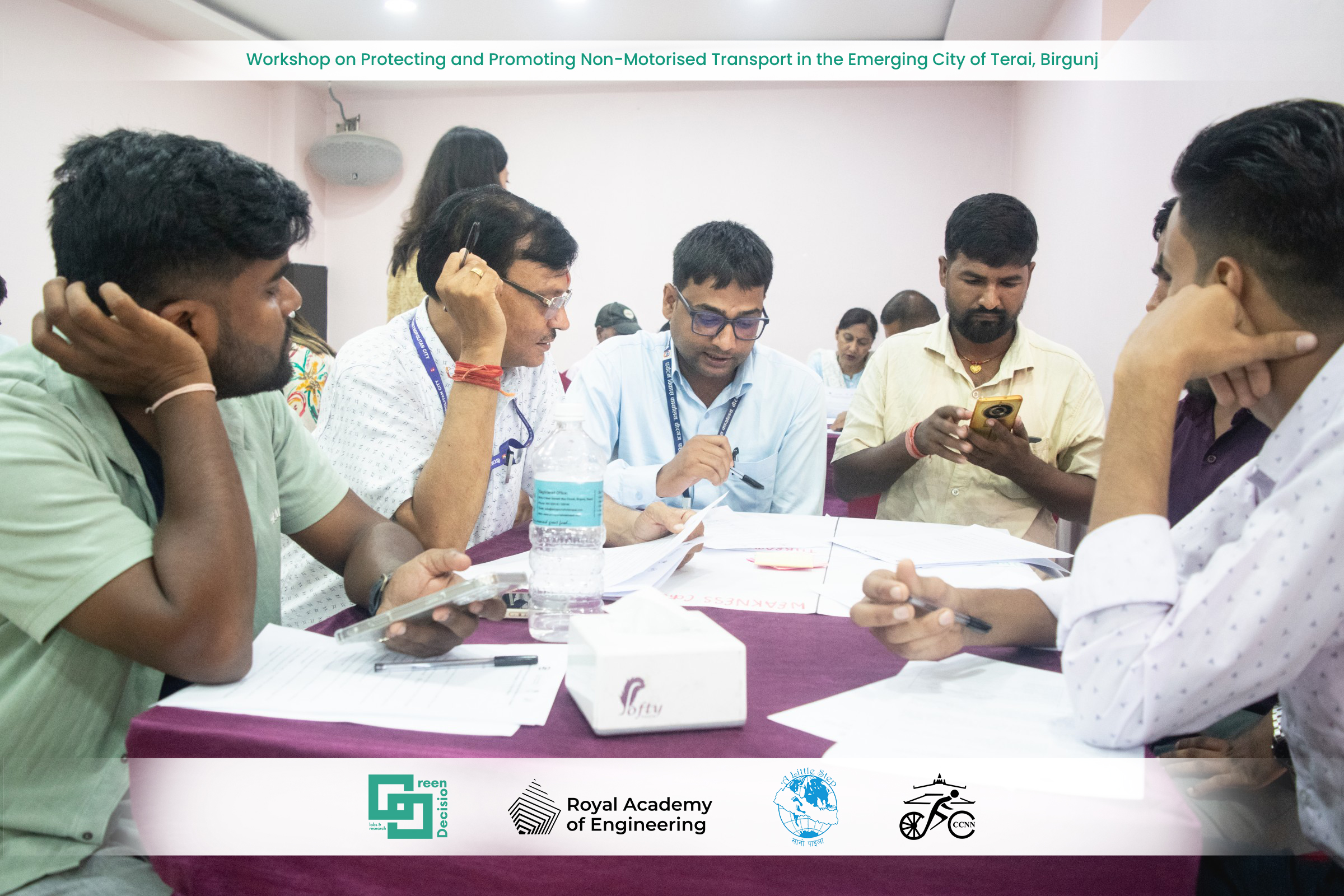
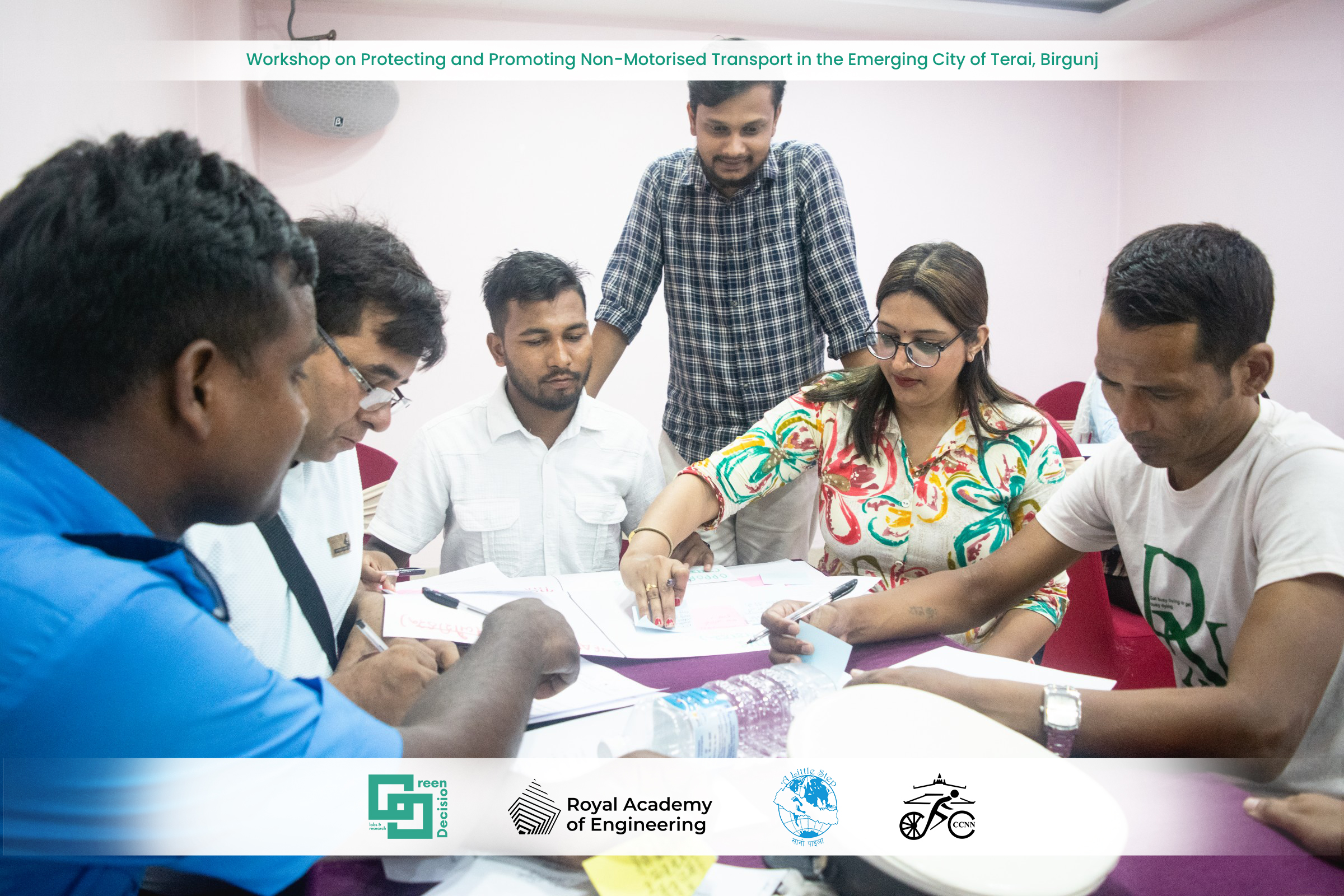
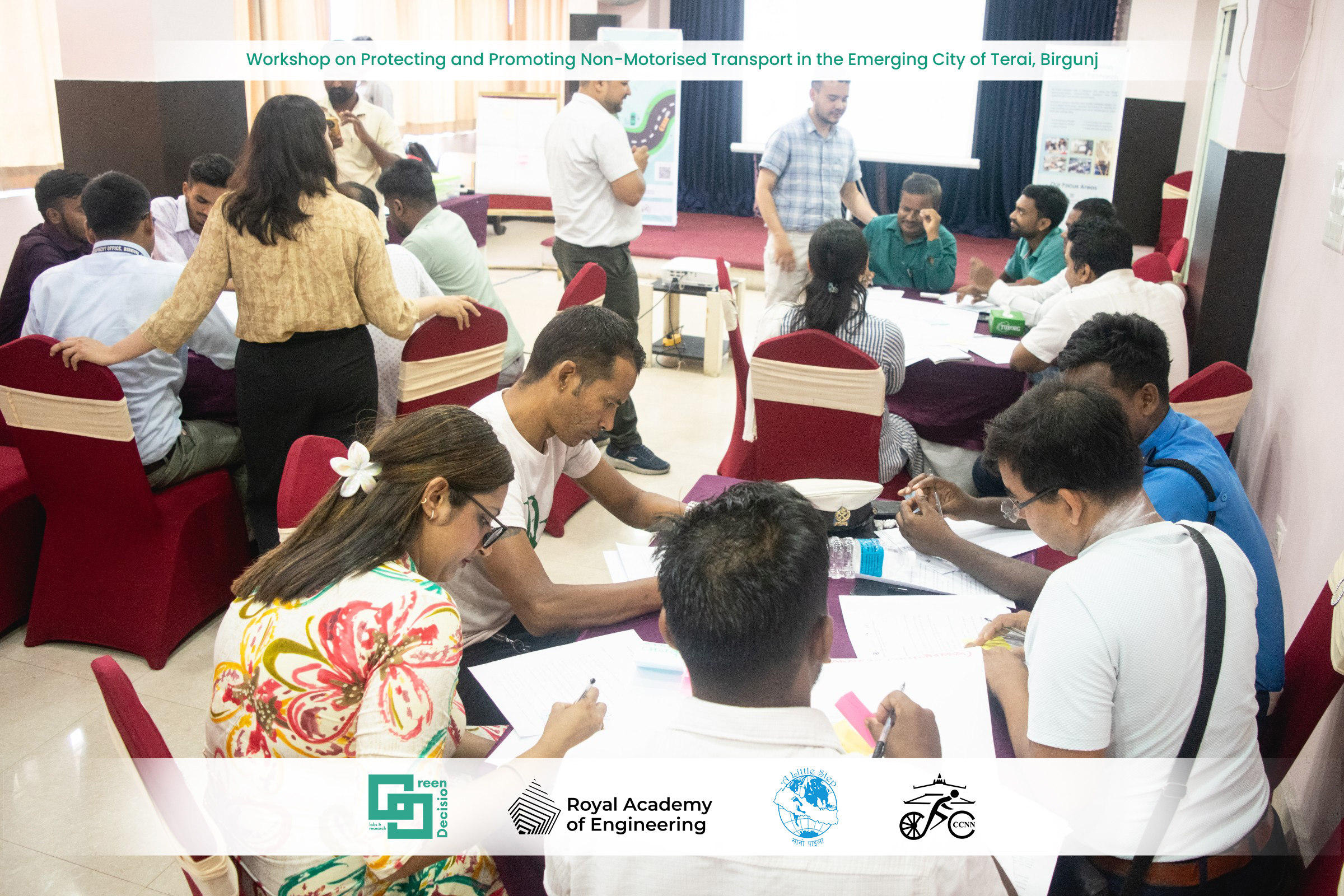
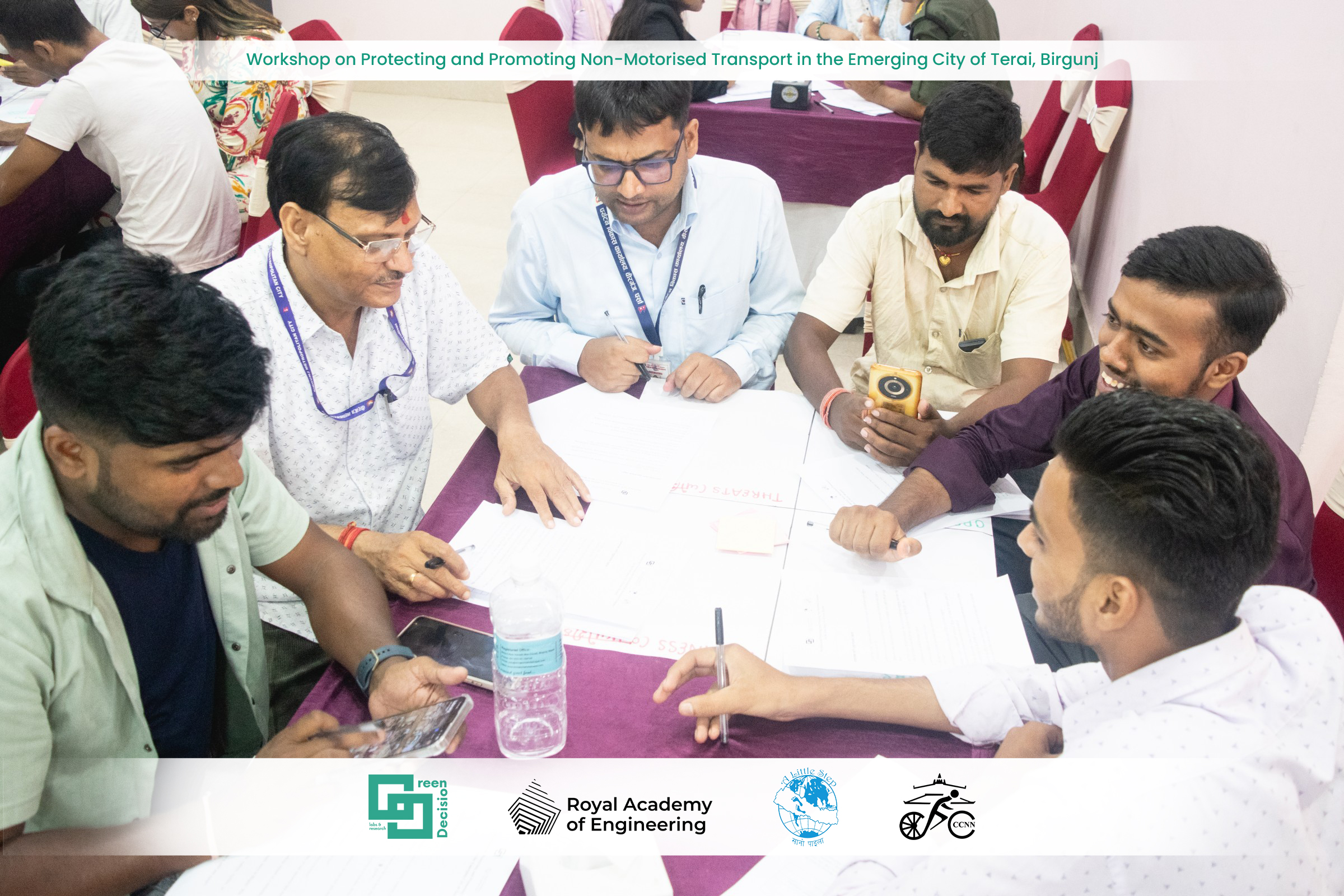
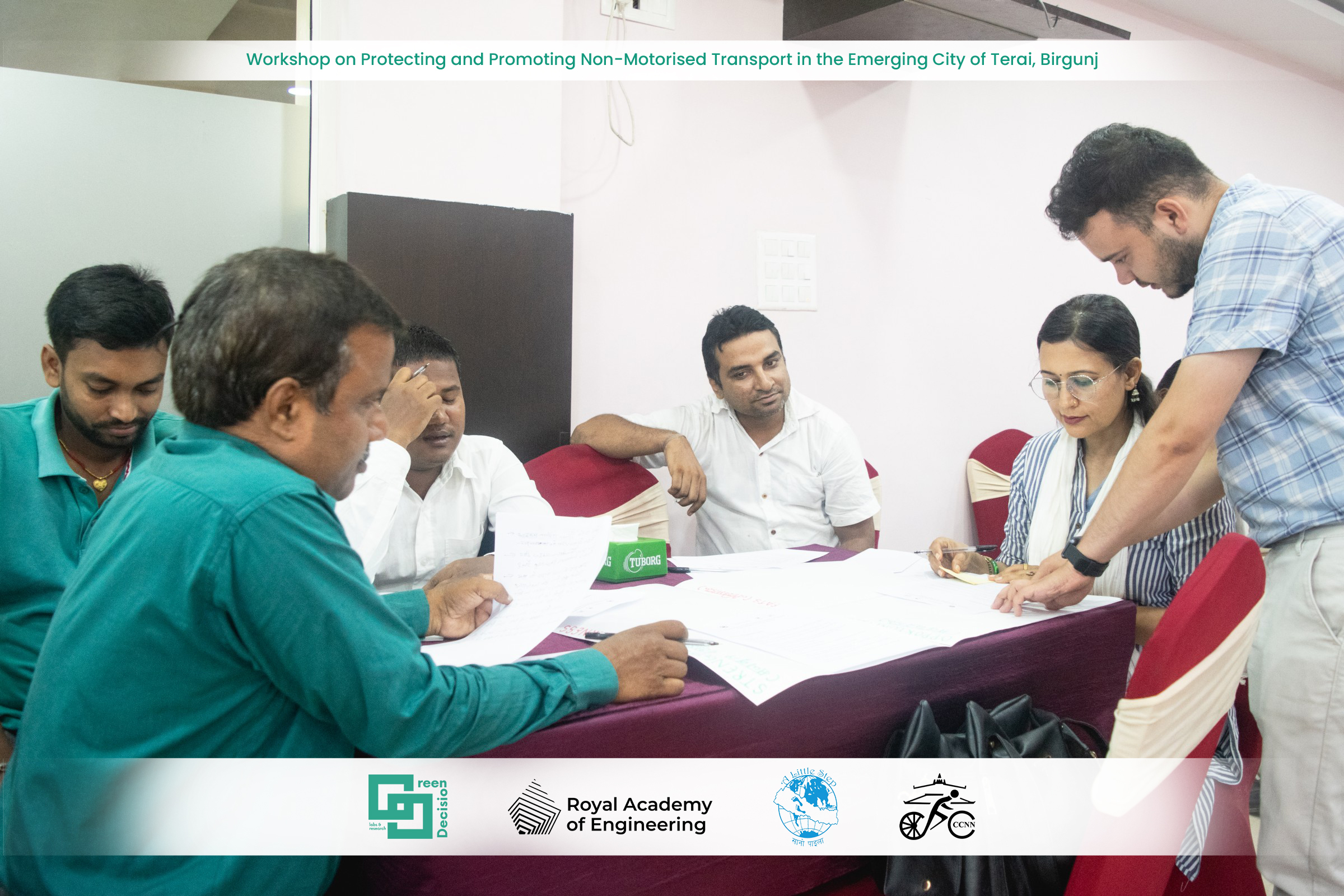
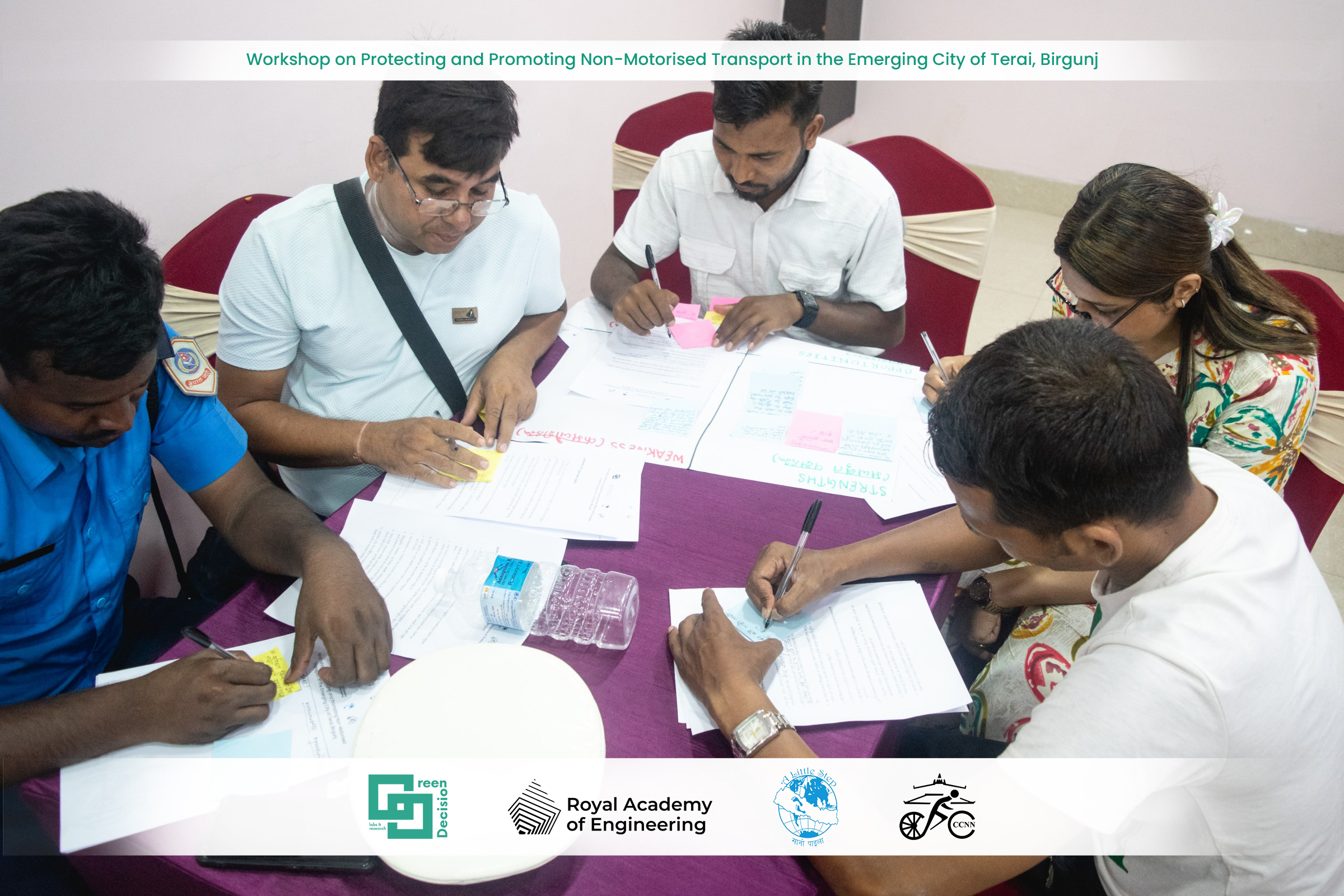
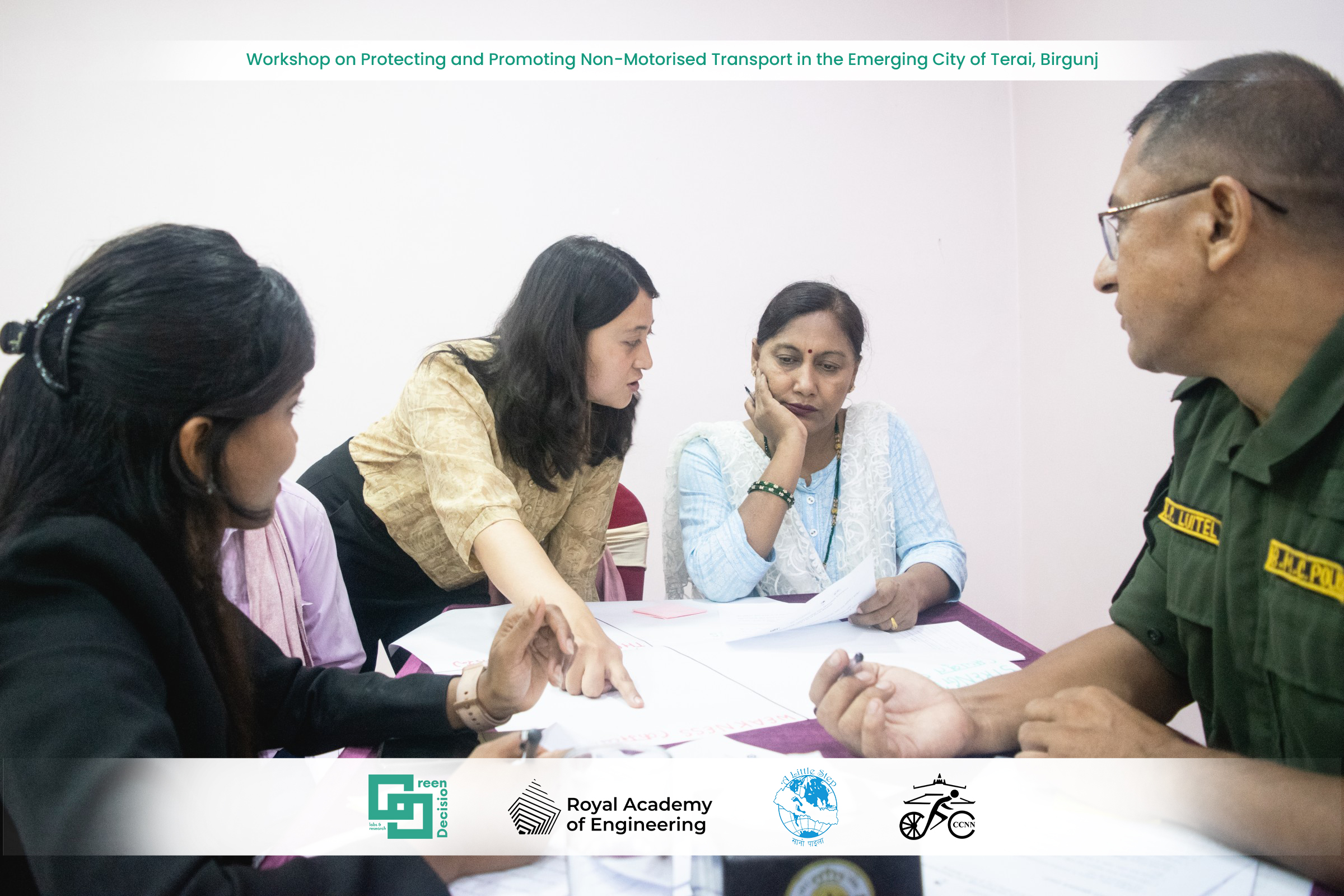
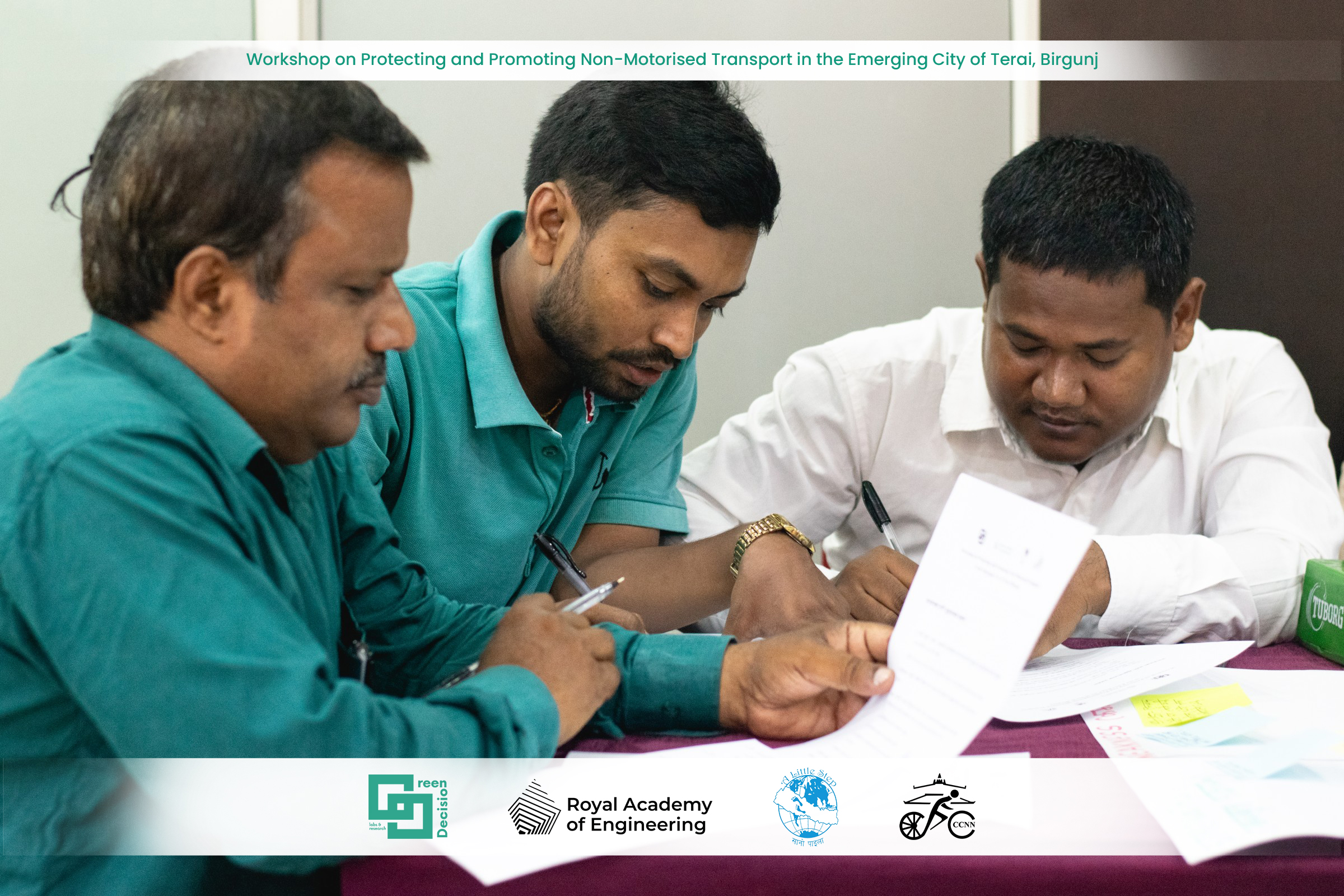
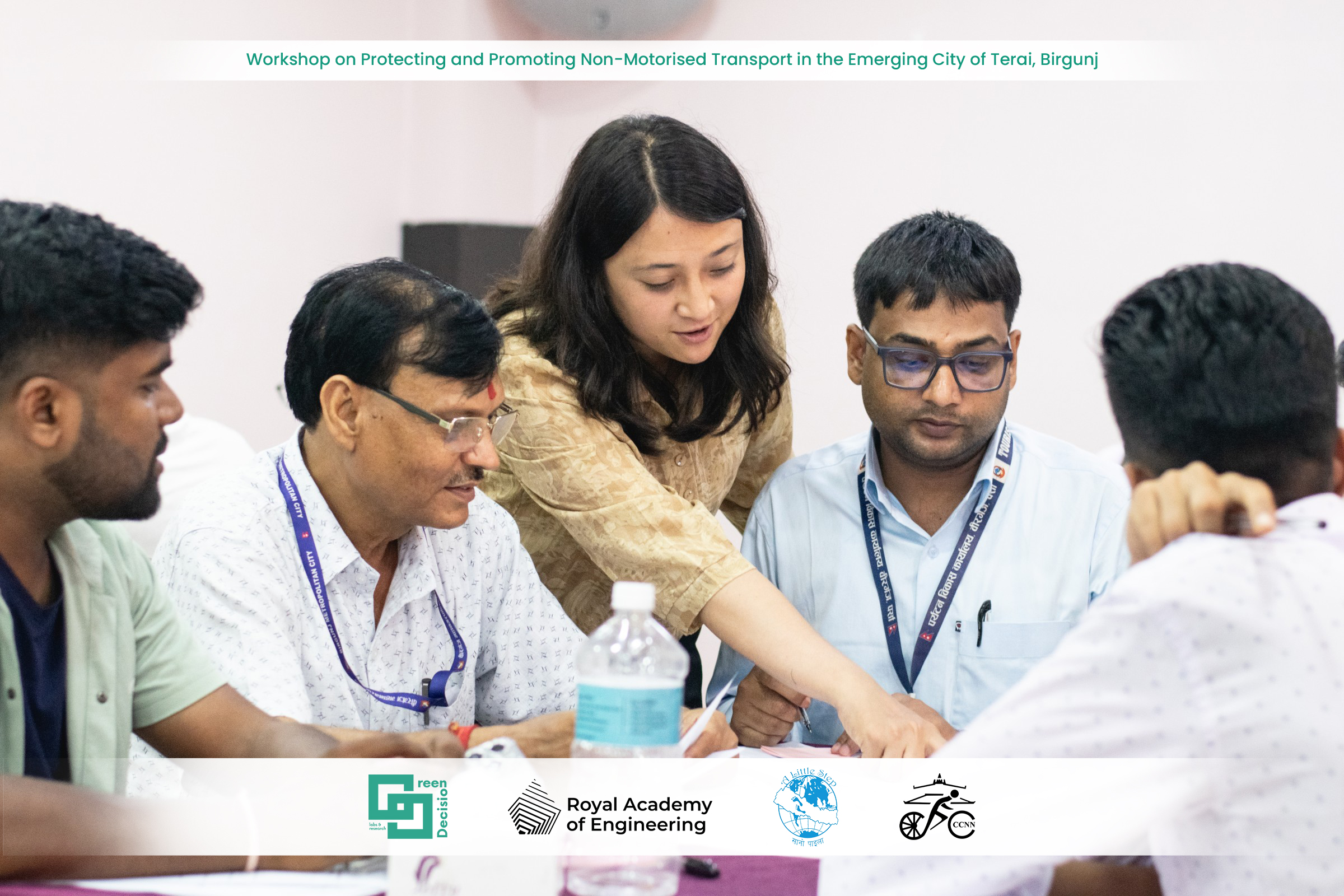
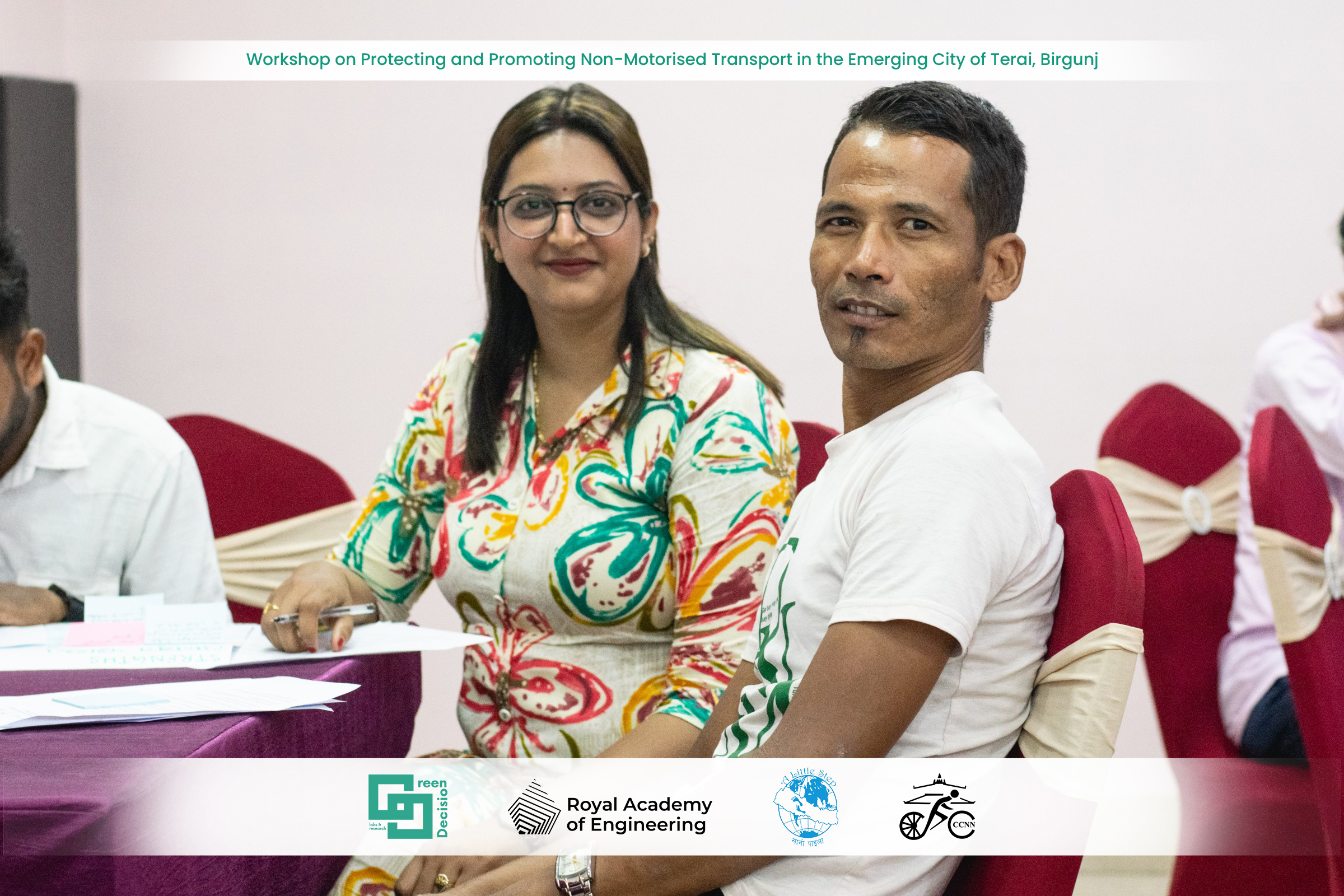

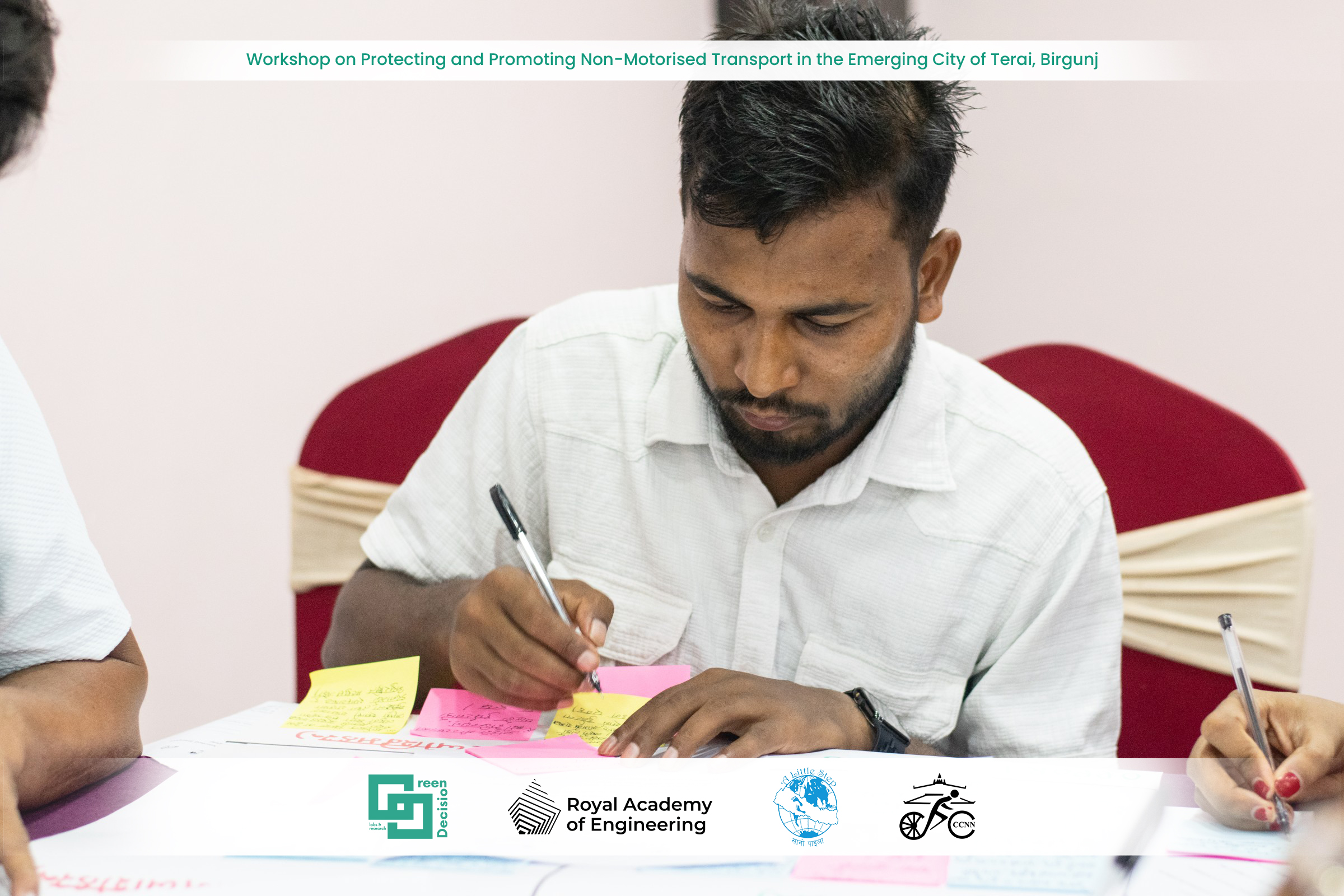
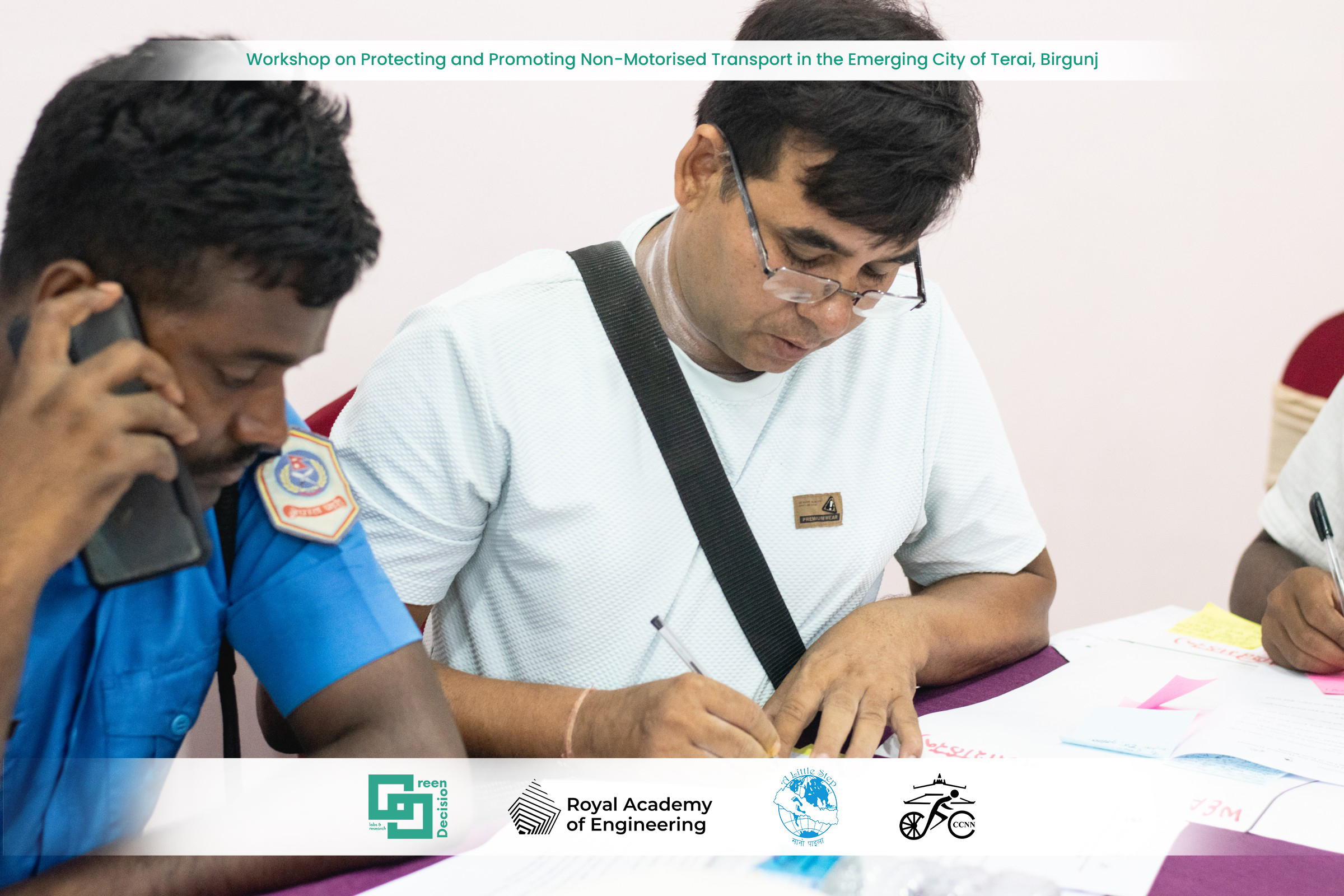
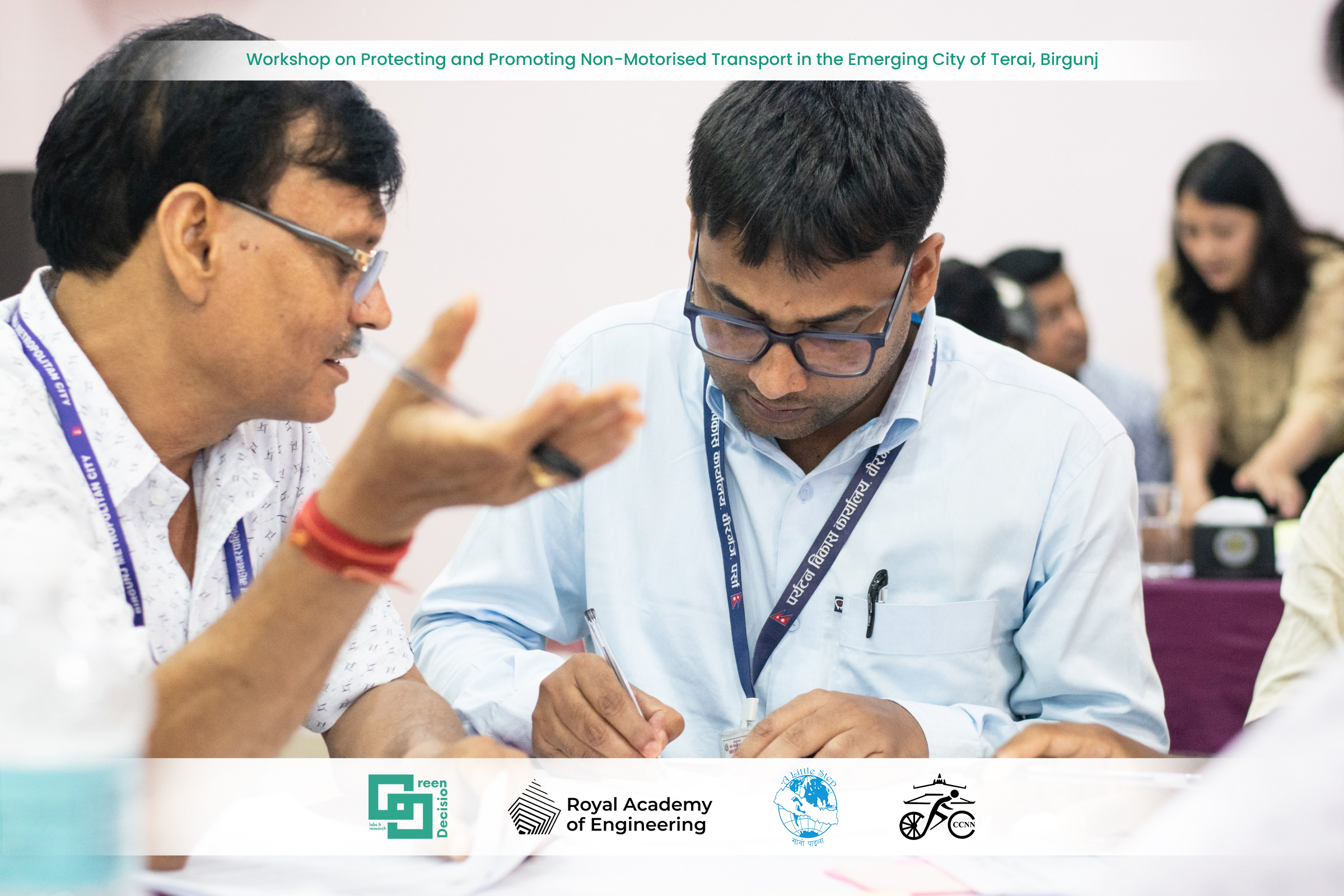

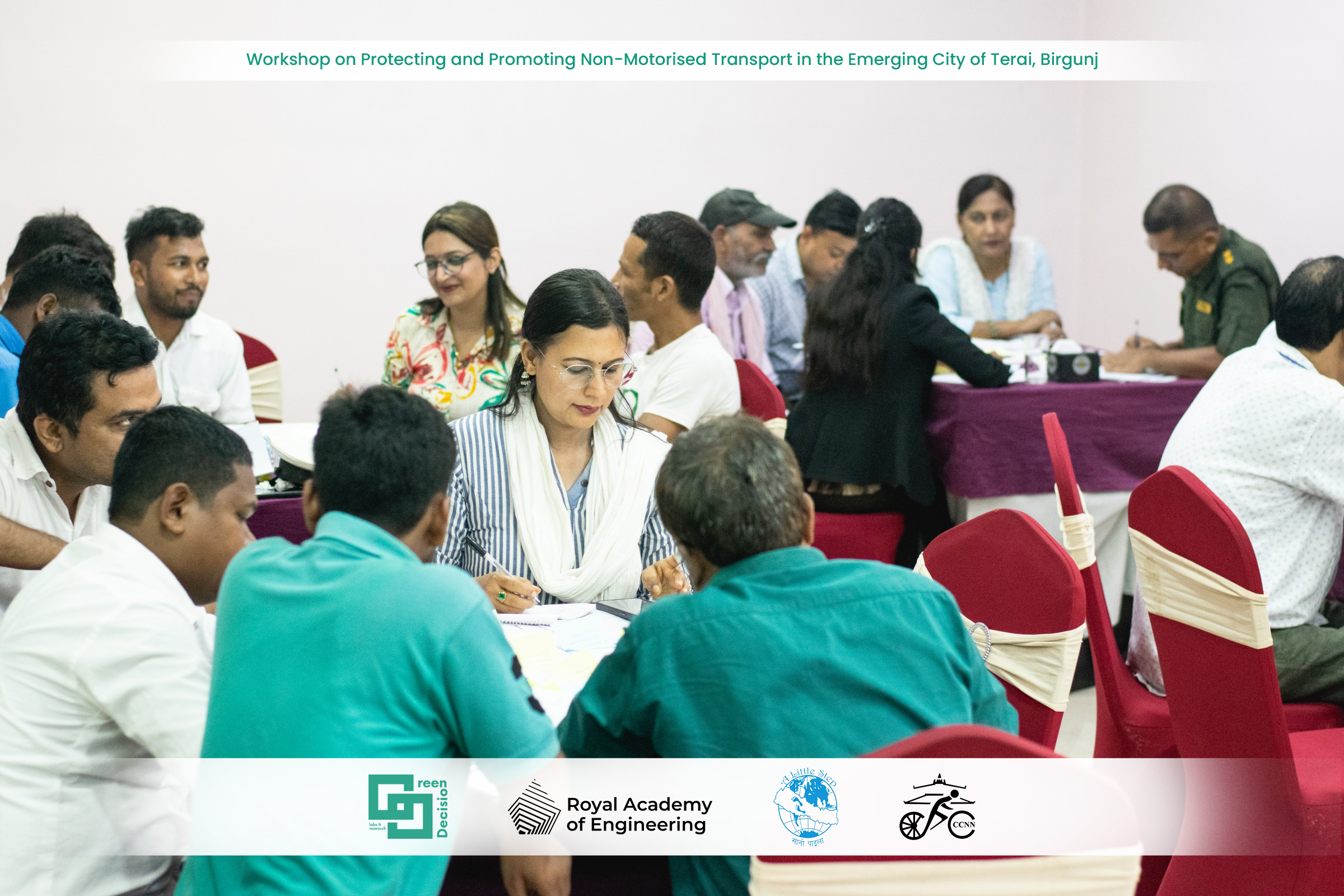
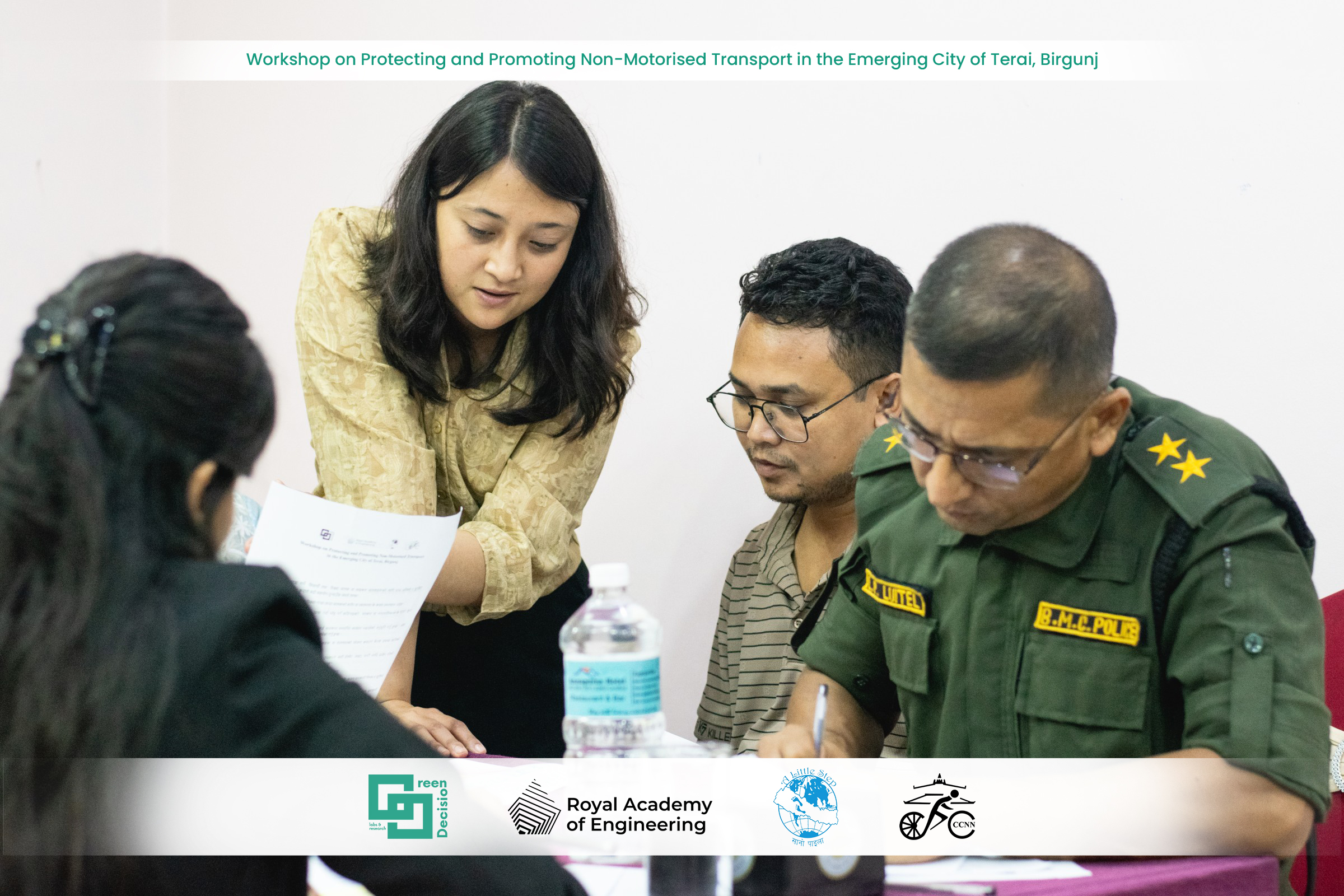
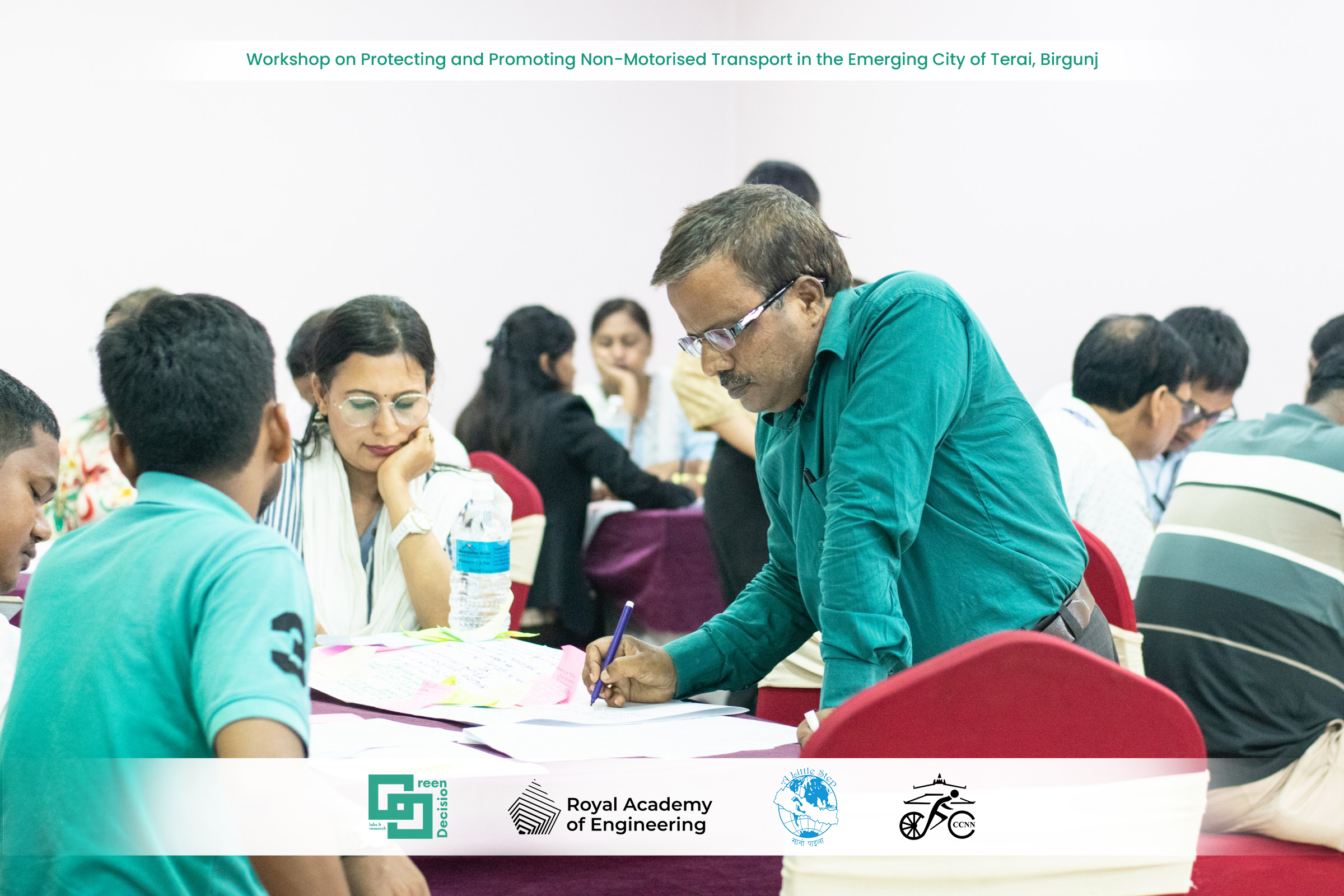
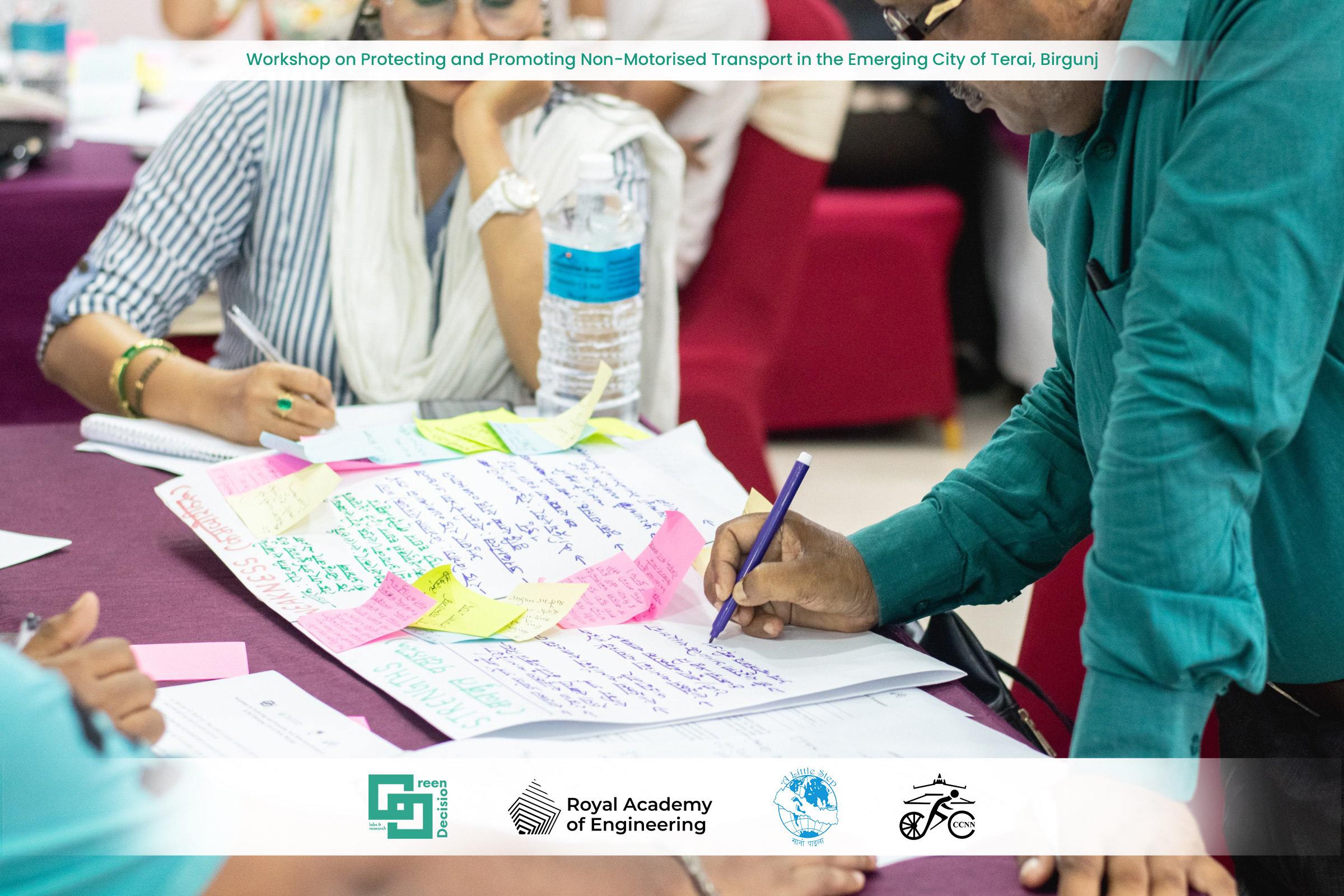
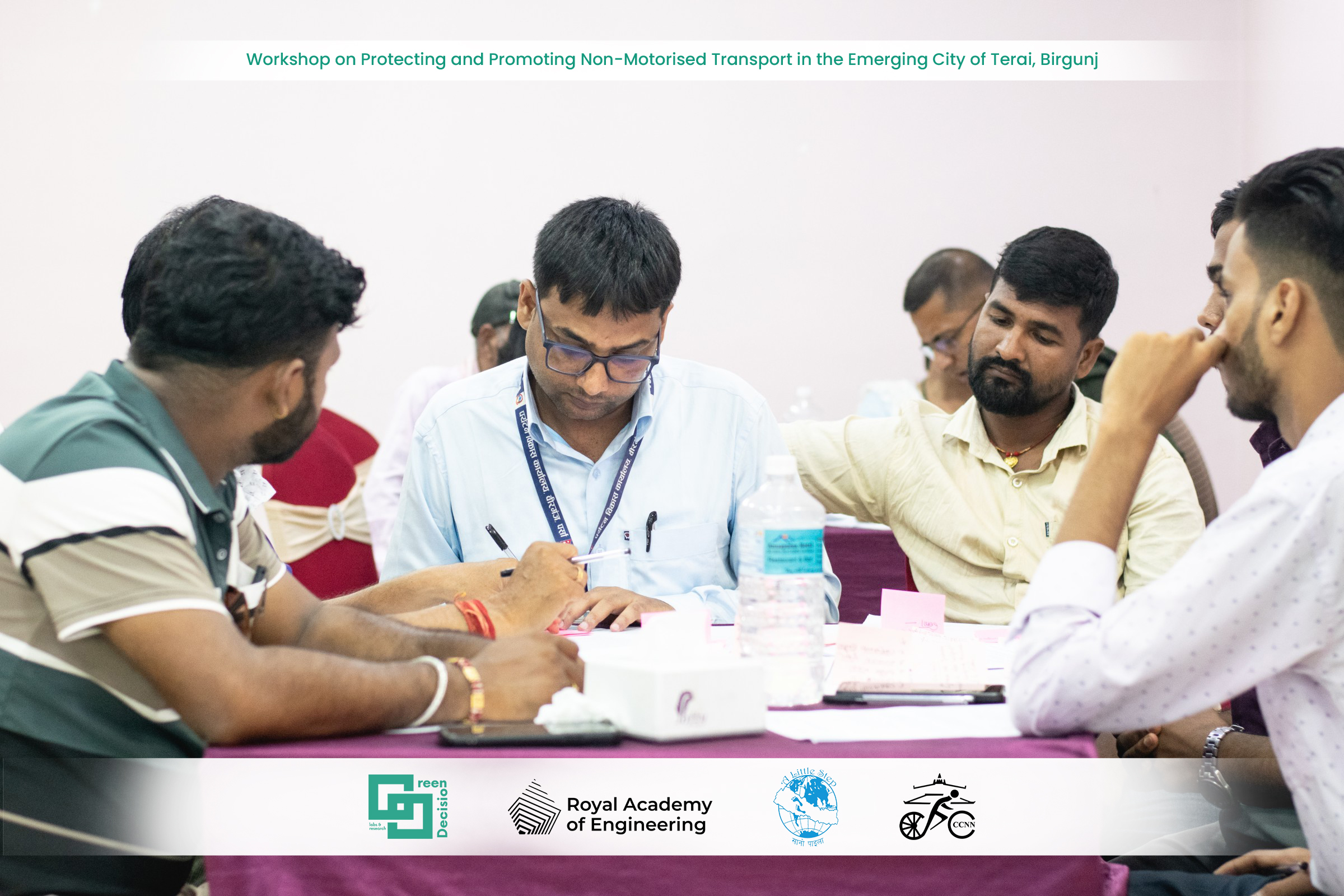
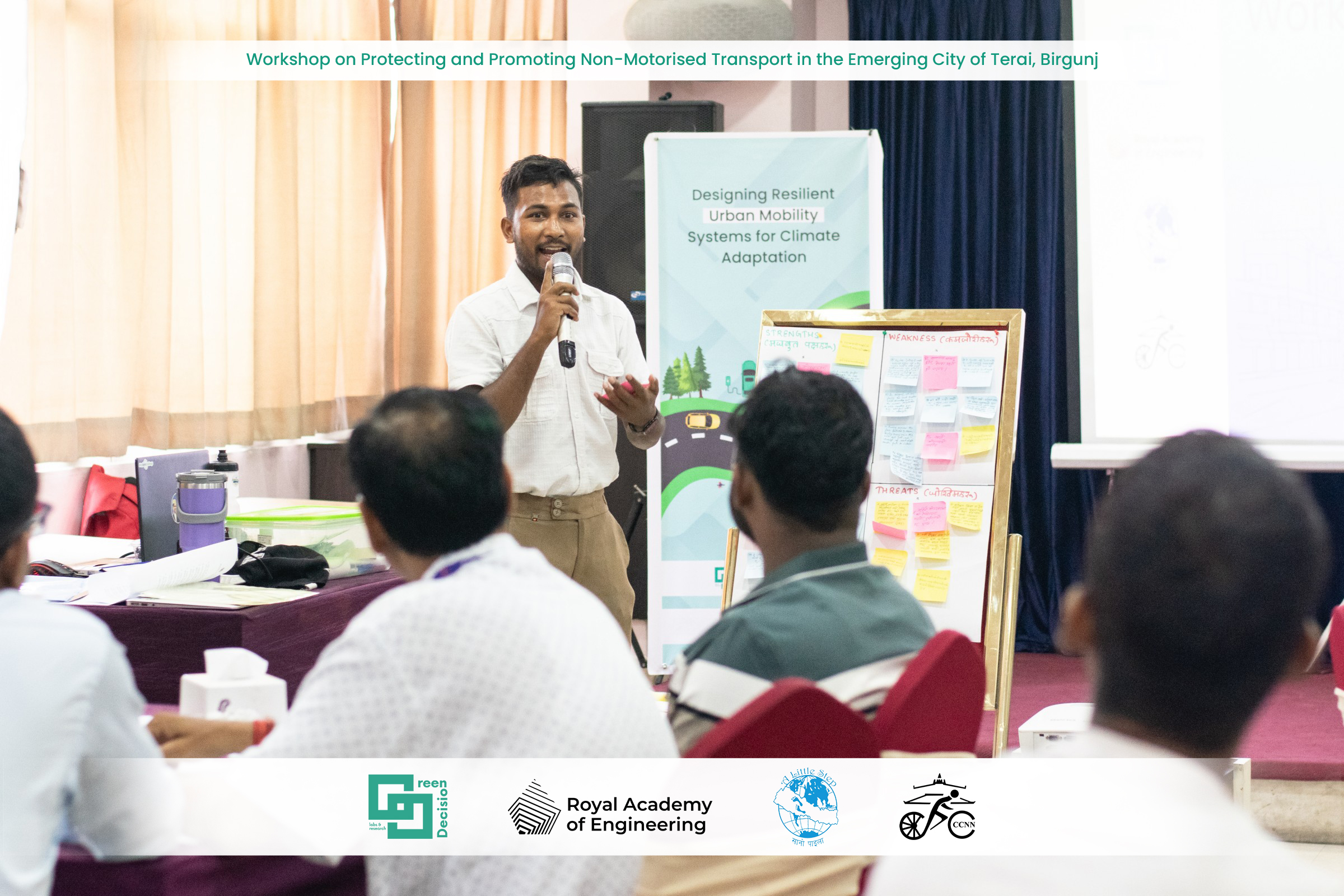
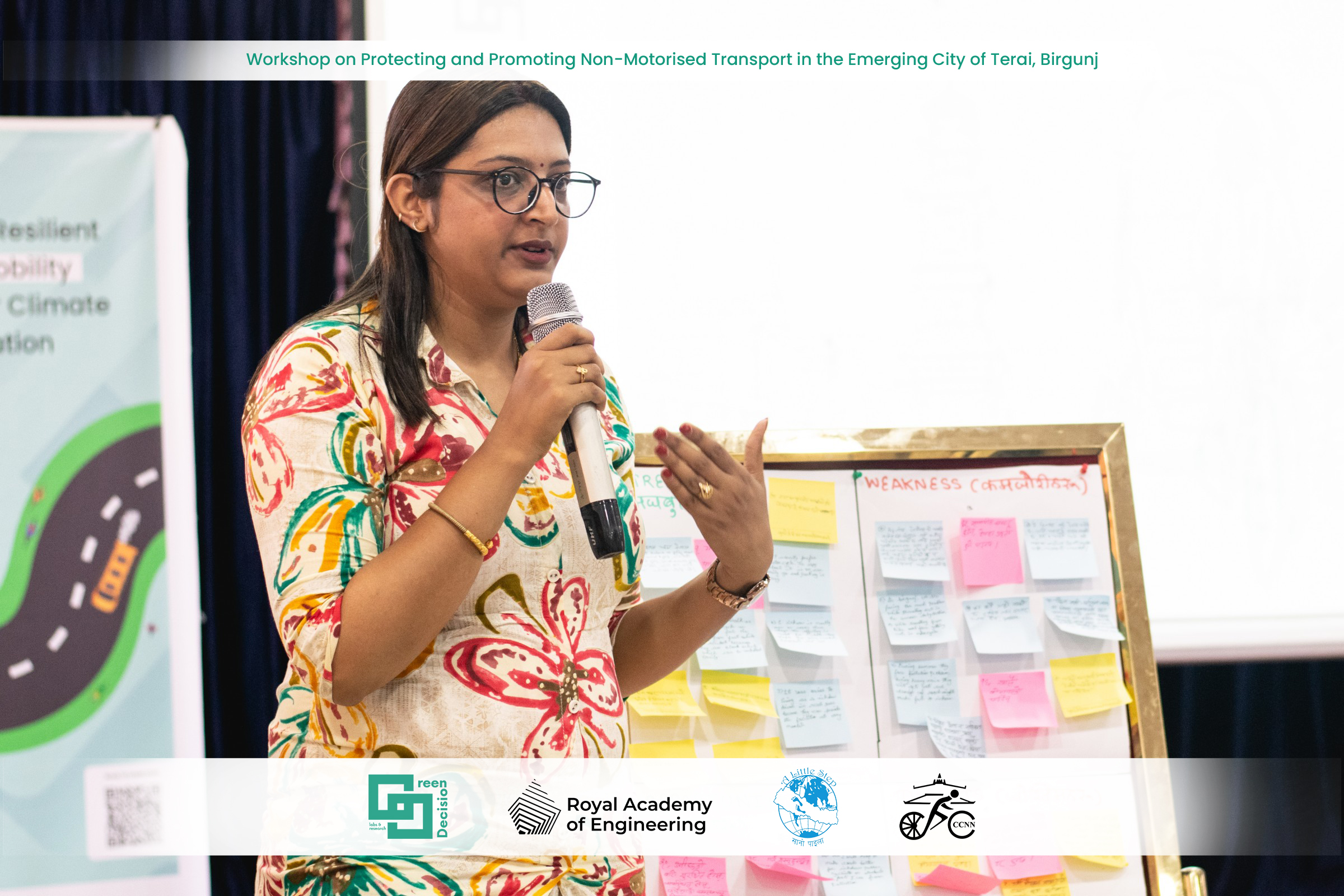

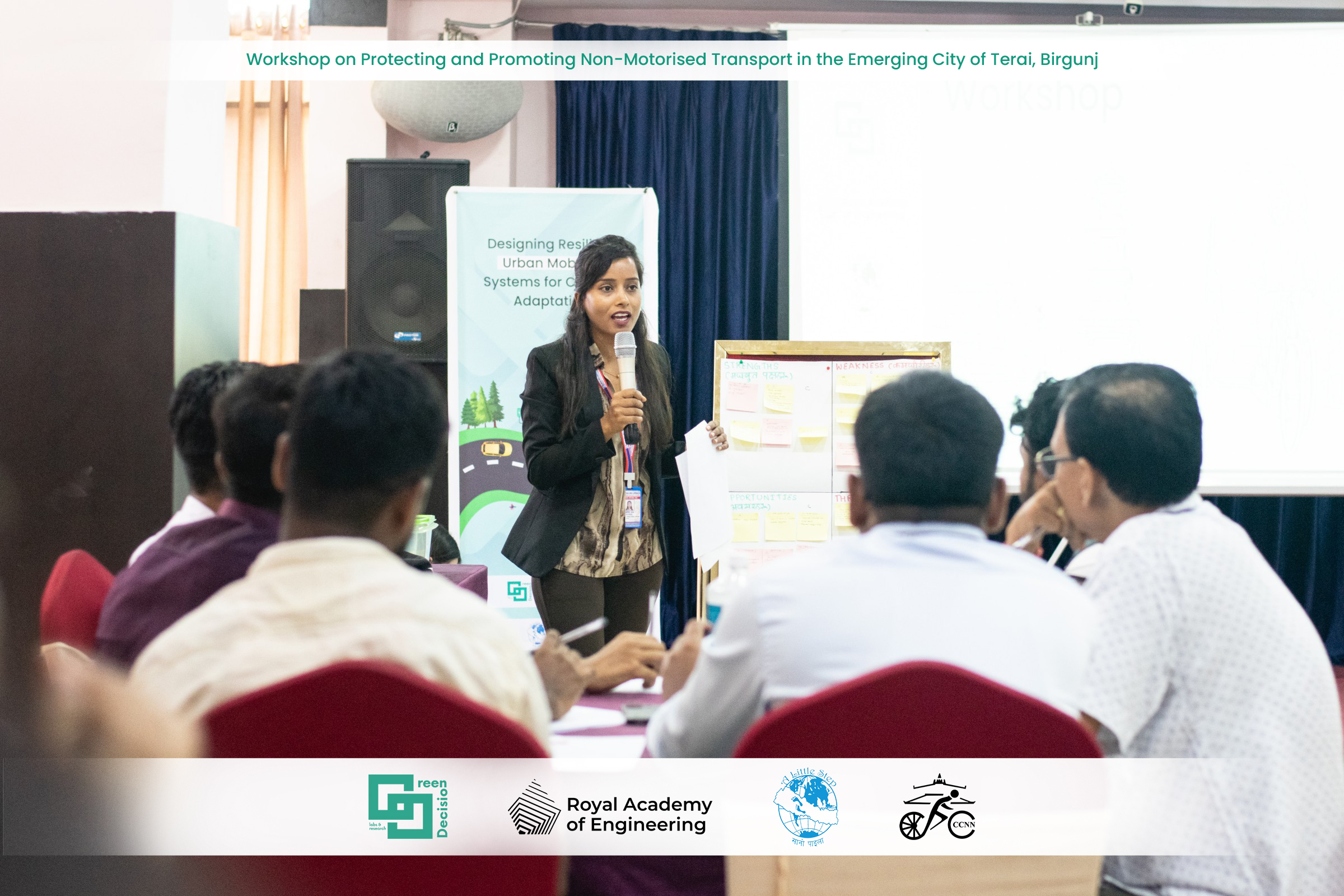
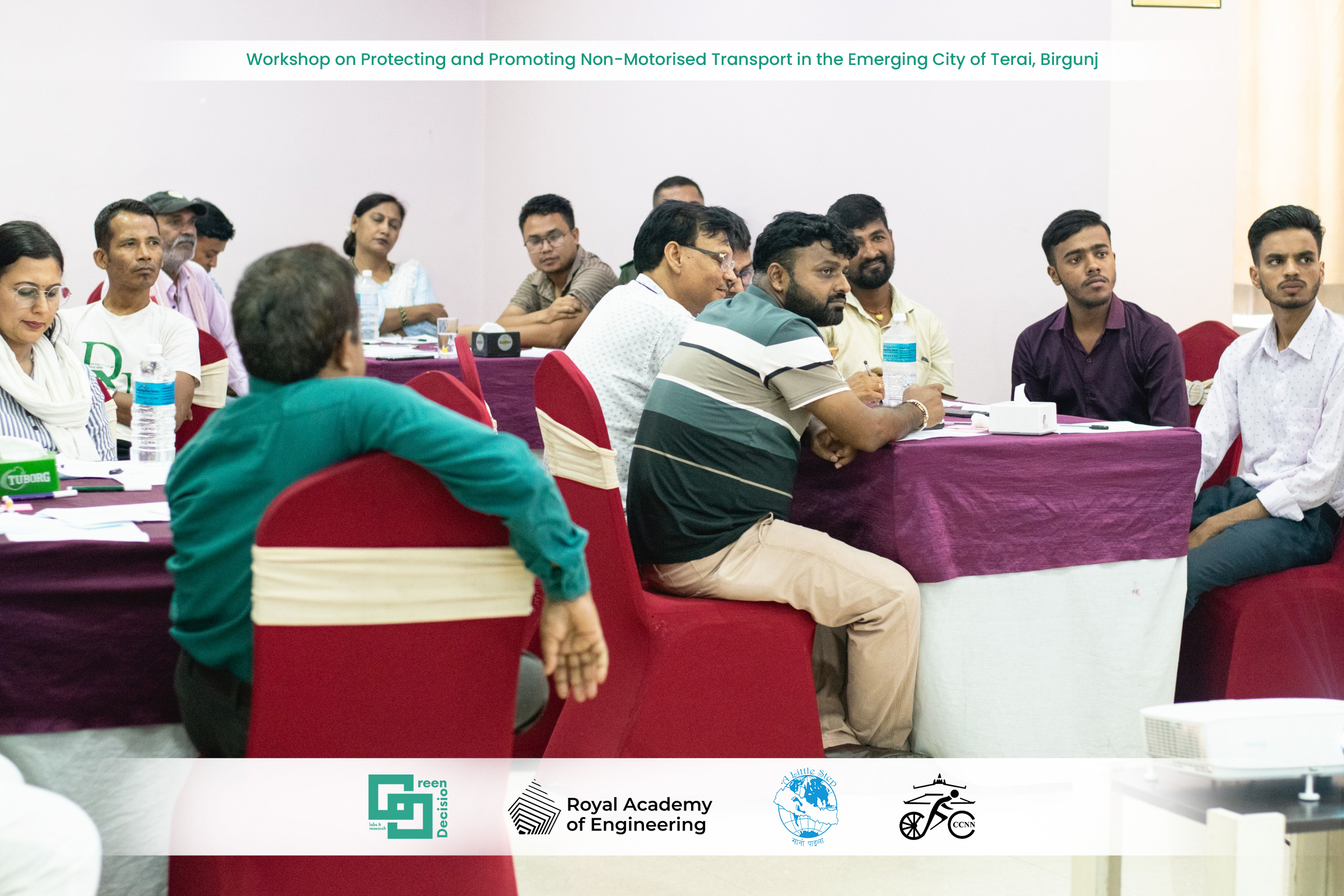
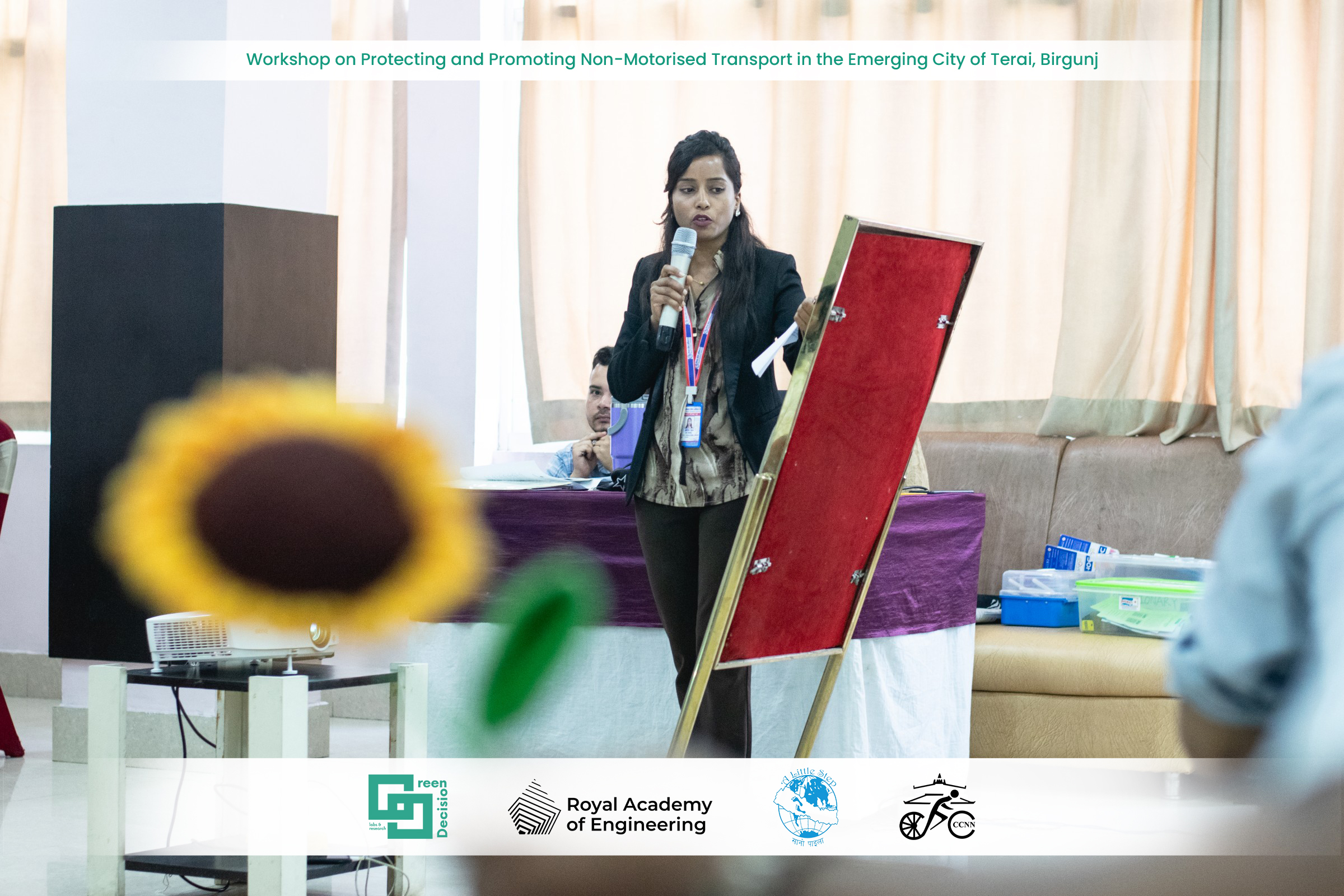

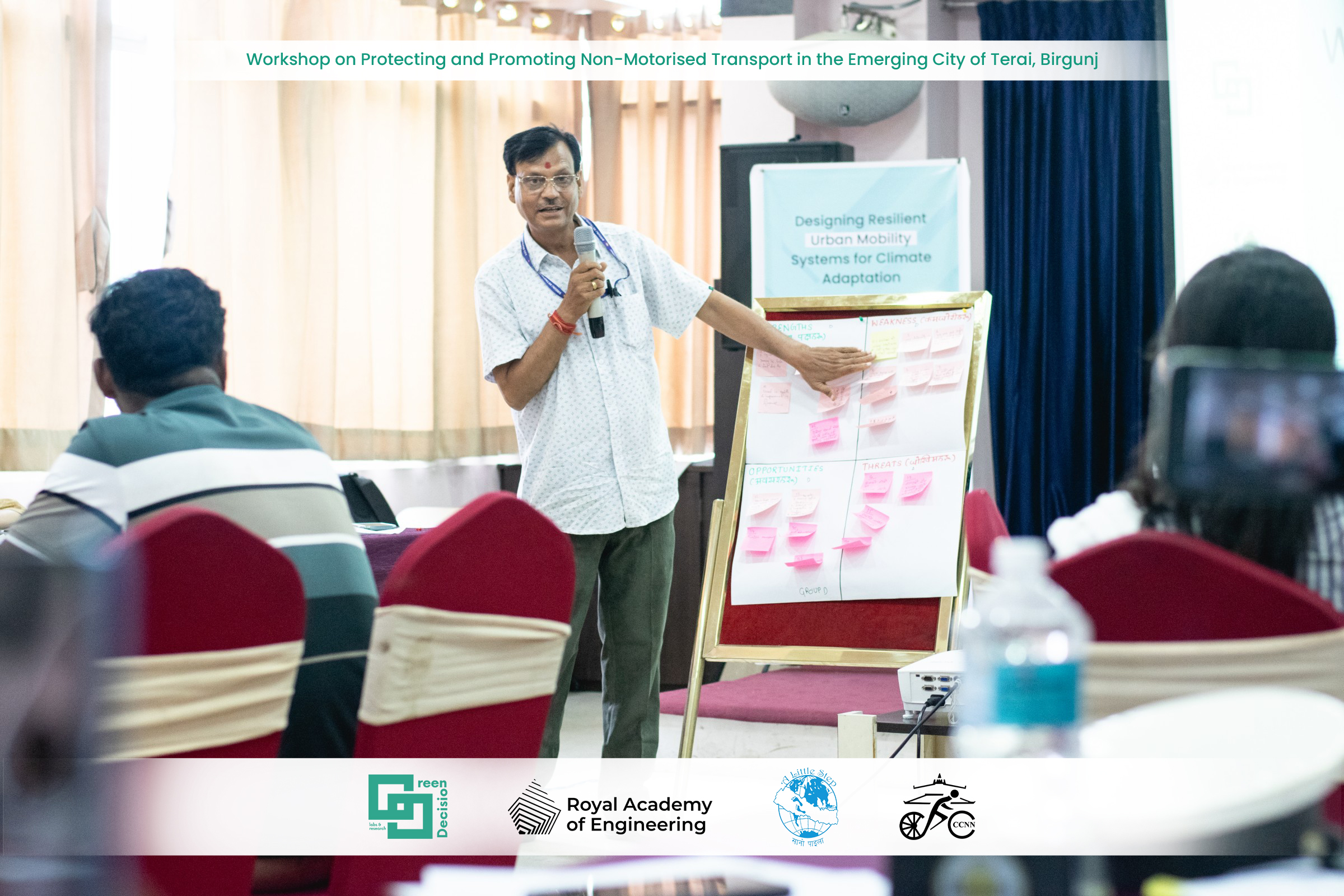

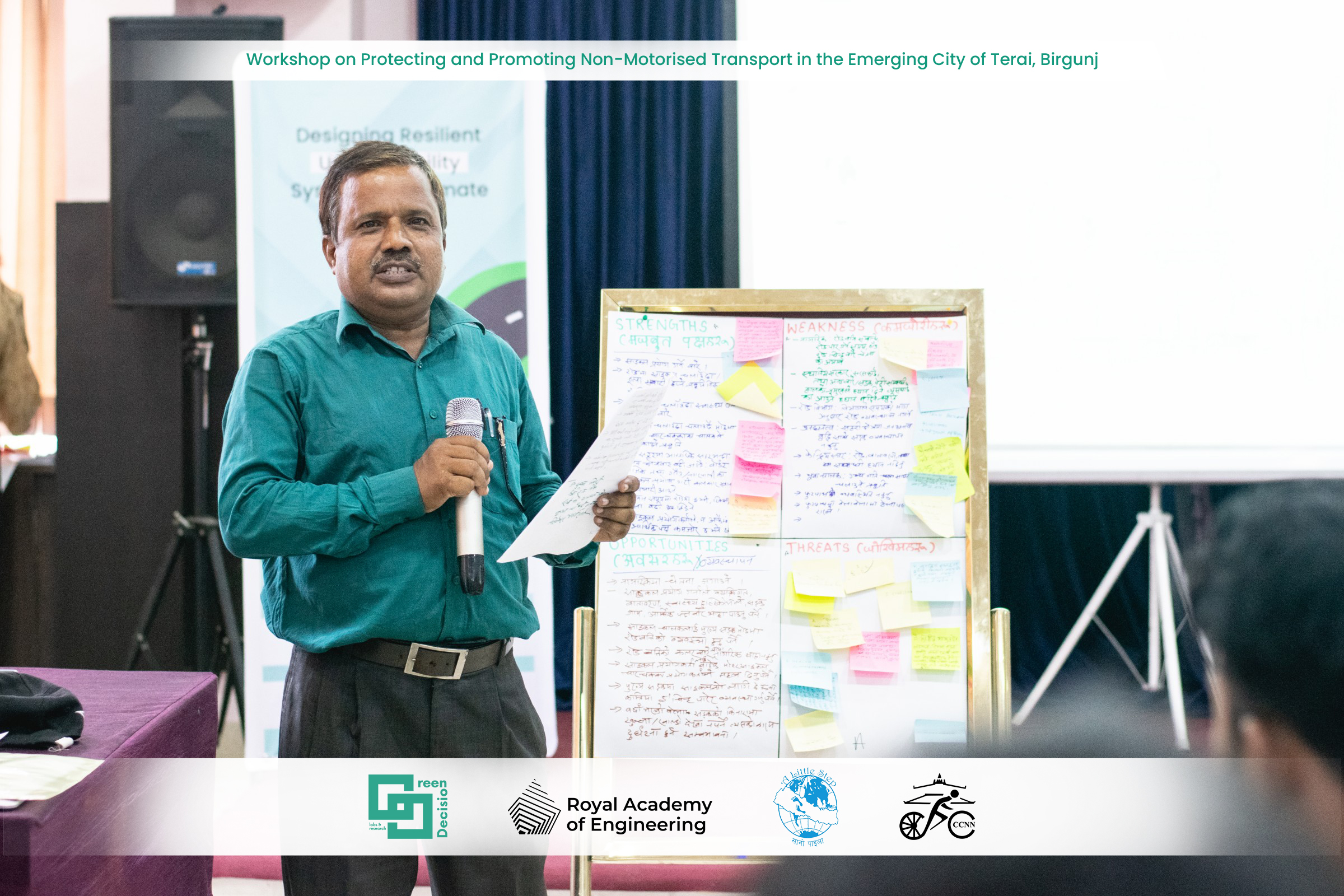
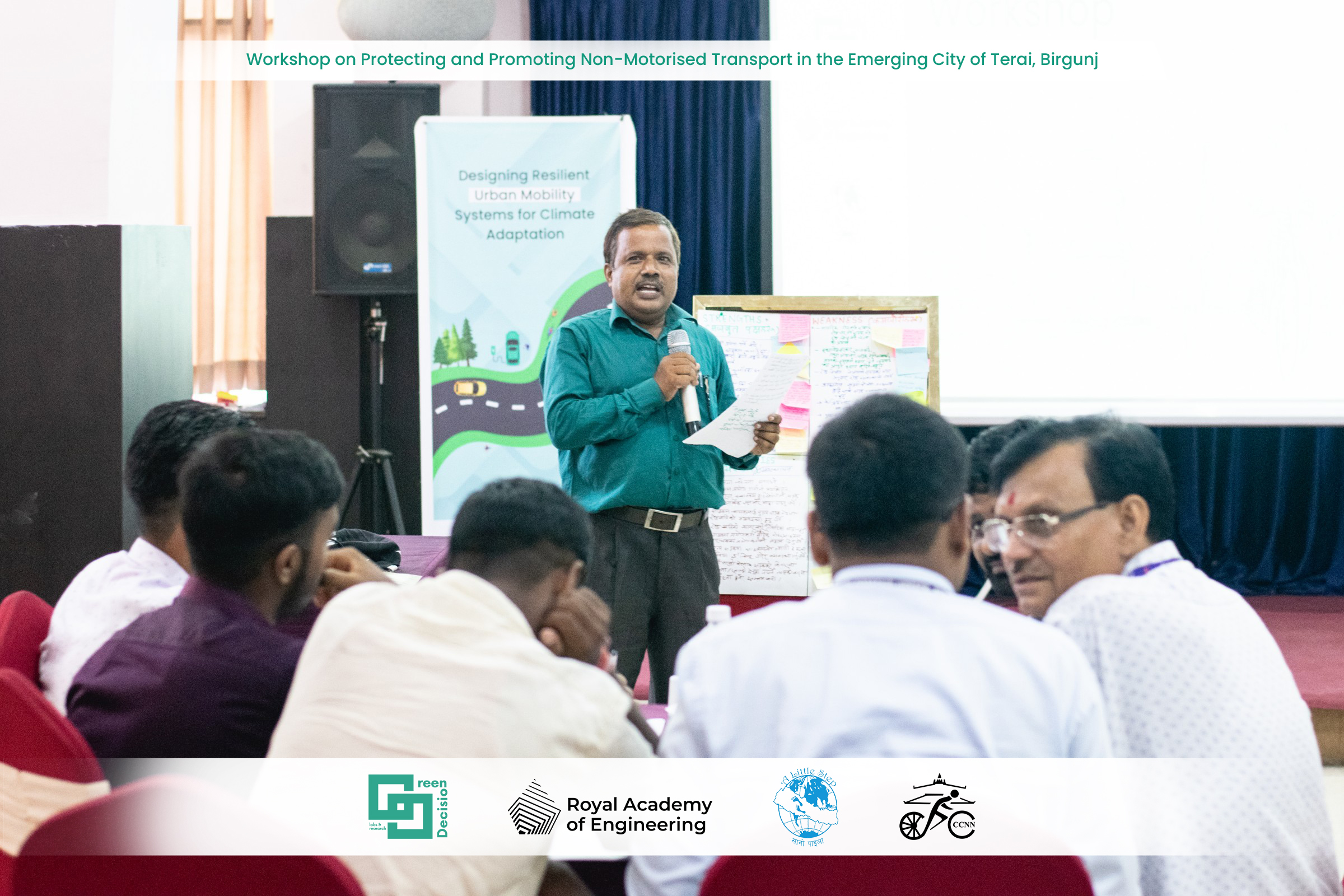
Outcomes and Way Forward
The workshop led to several key takeaways:
- A shared understanding of the social, infrastructural, and policy barriers facing non-motorised transport users in Birgunj.
- Co-created recommendations for improving safety, infrastructure, and policy inclusion to support NMT growth.
- Identification of gaps in urban planning, governance, and community engagement hindering sustainable mobility.
- Generation of actionable insights contributing to the Royal Academy of Engineering (RAE)-supported regional research.
- Strengthened networks among local government, civil society, and transport users, laying the groundwork for future pilot projects and advocacy efforts.
What’s Next?
A similar workshop is planned to be held soon in Pokhara, aiming to engage diverse stakeholders to further explore inclusive and climate-resilient urban mobility solutions.
Insights and recommendations from both Birgunj and Pokhara workshops will feed into a comprehensive regional research paper on resilient urban transport in South Asia.
An international symposium in Kathmandu will be convened to bring together urban mobility experts, policymakers, and practitioners from across the region to share best practices and scale successful interventions.



